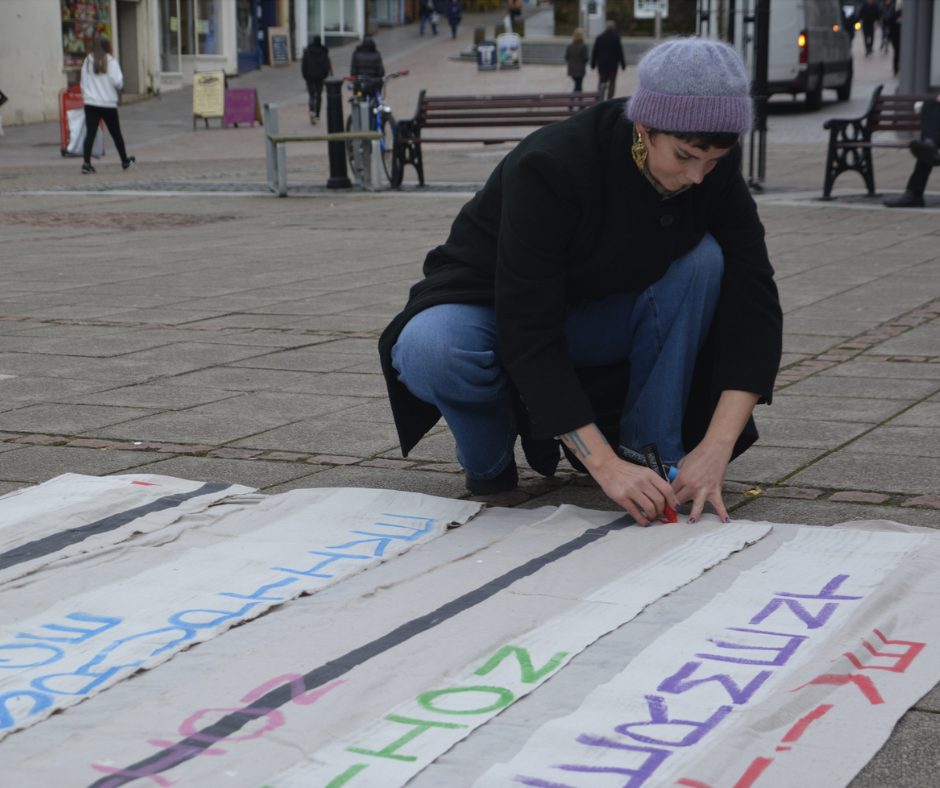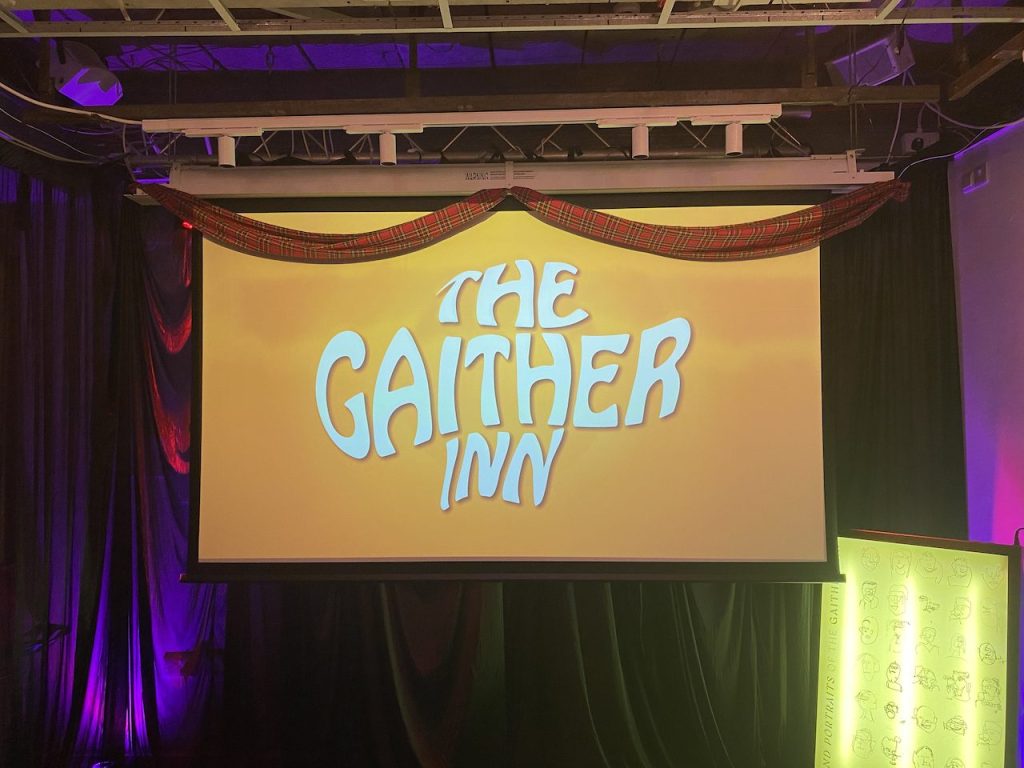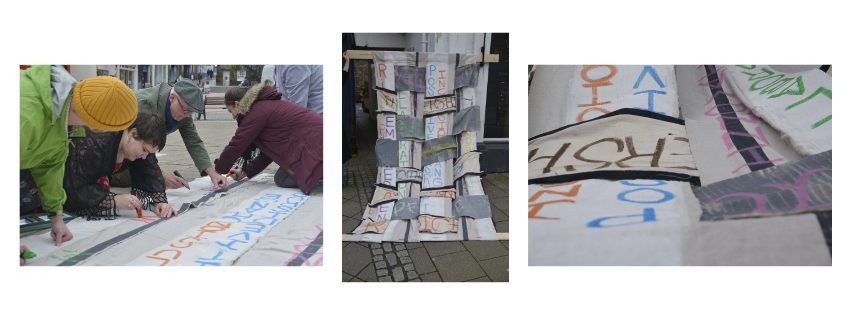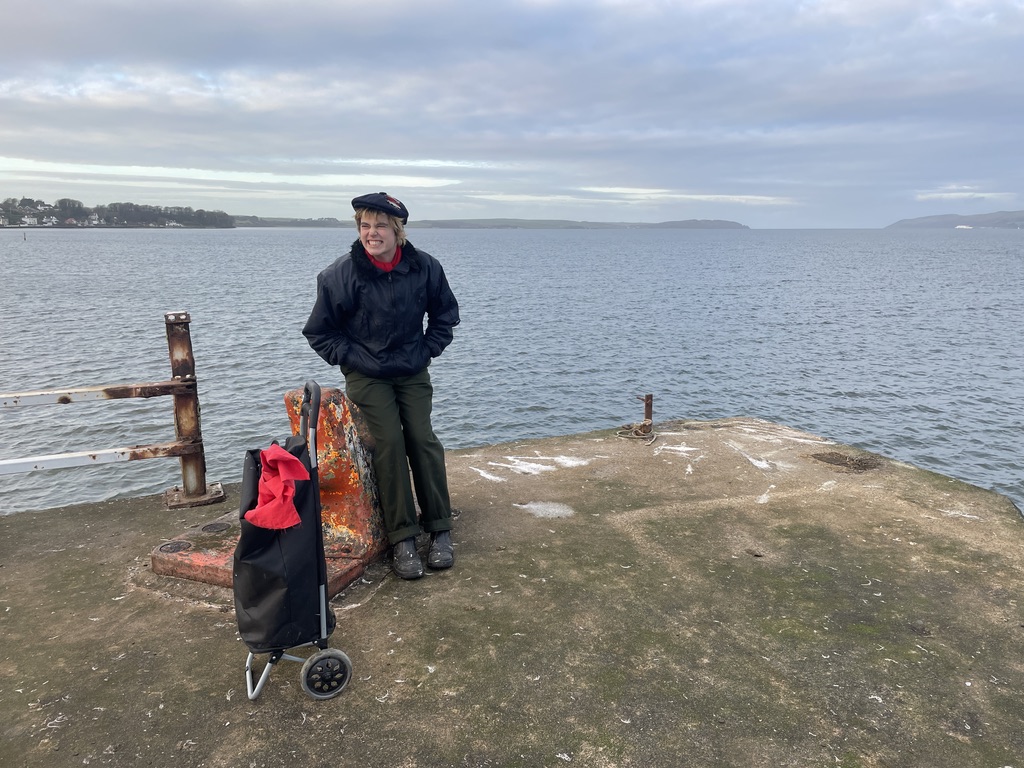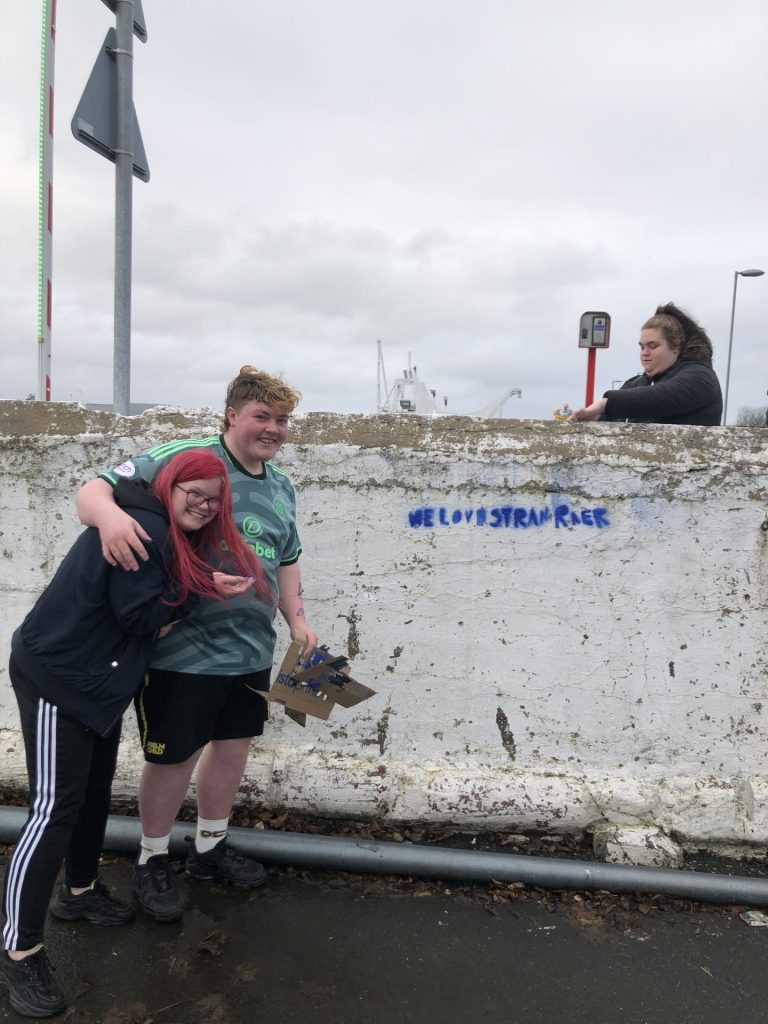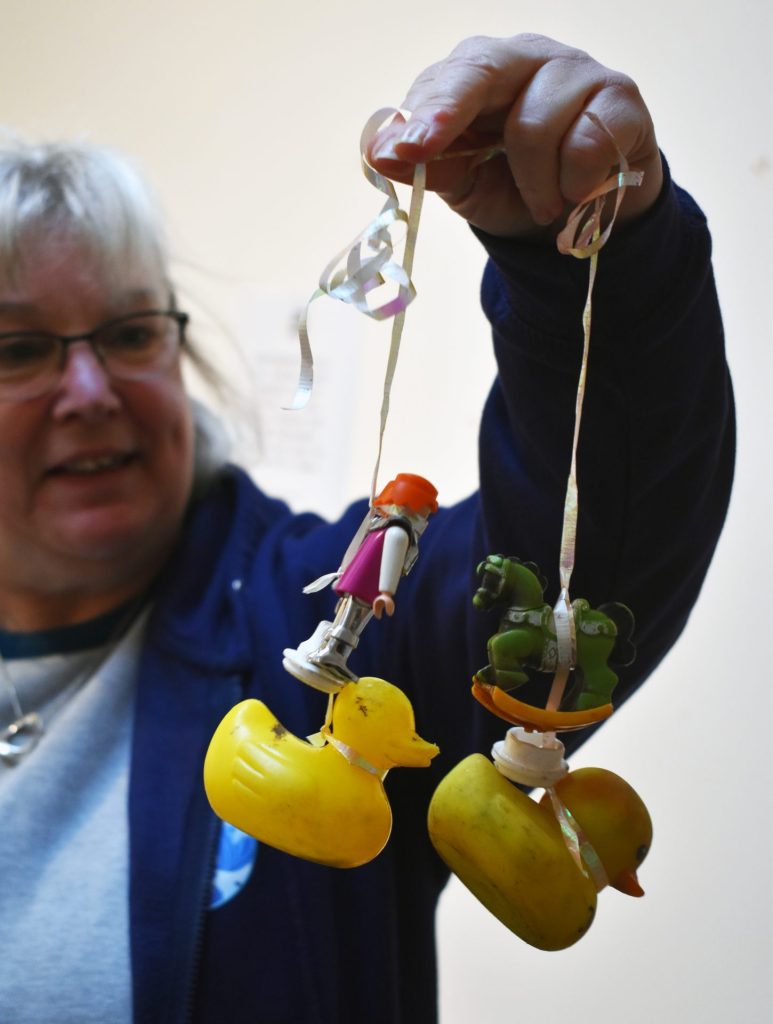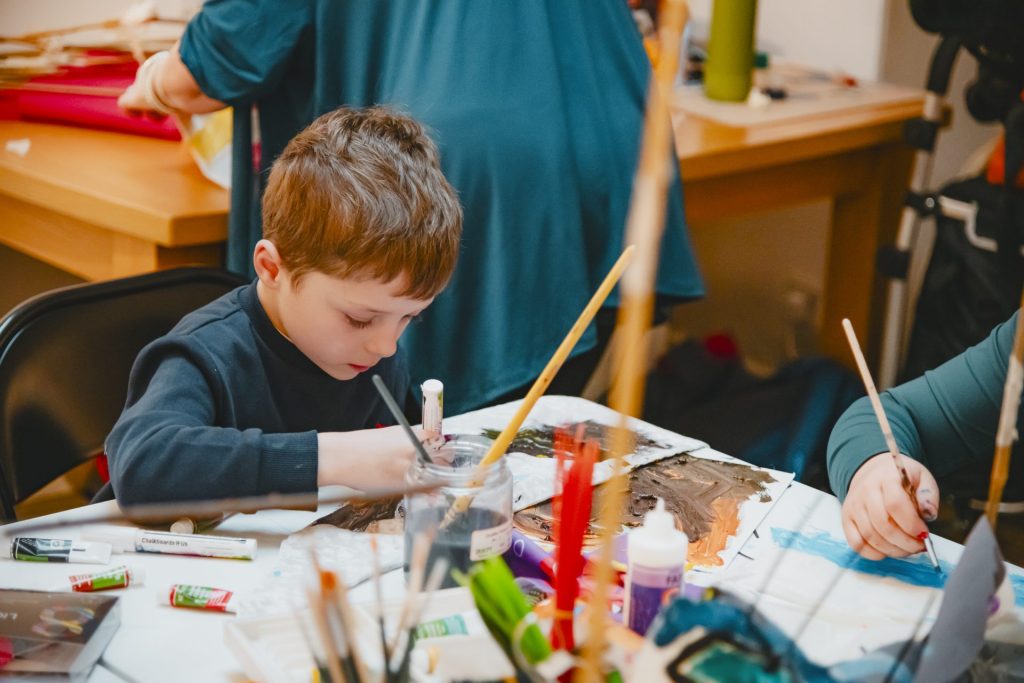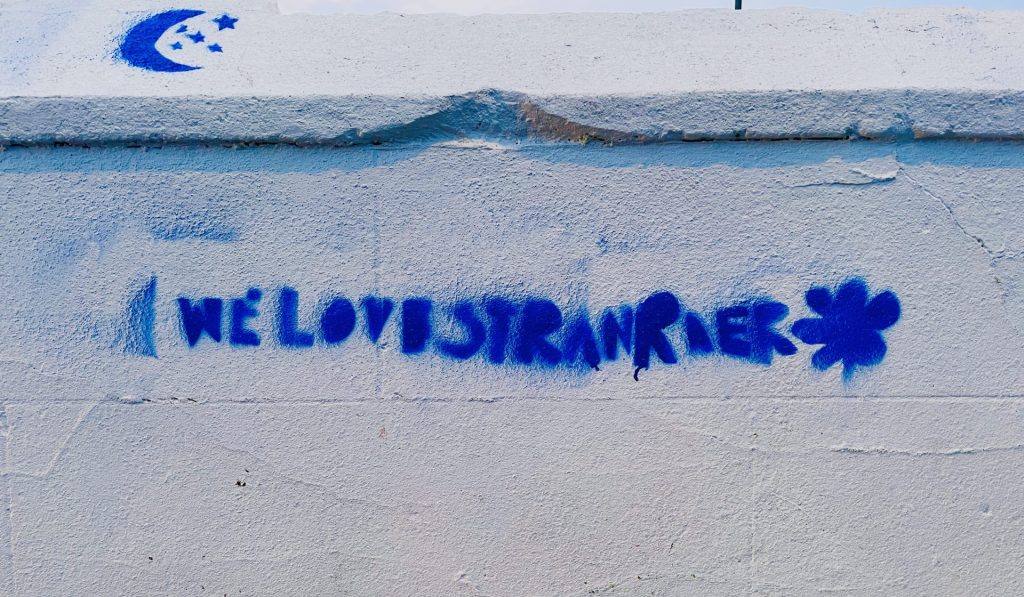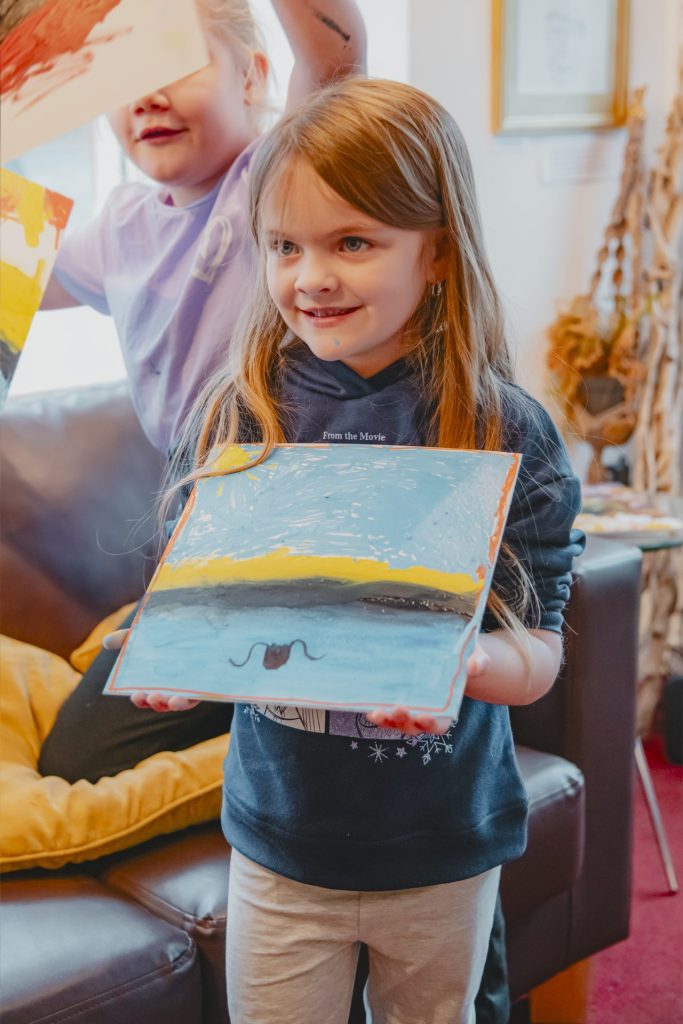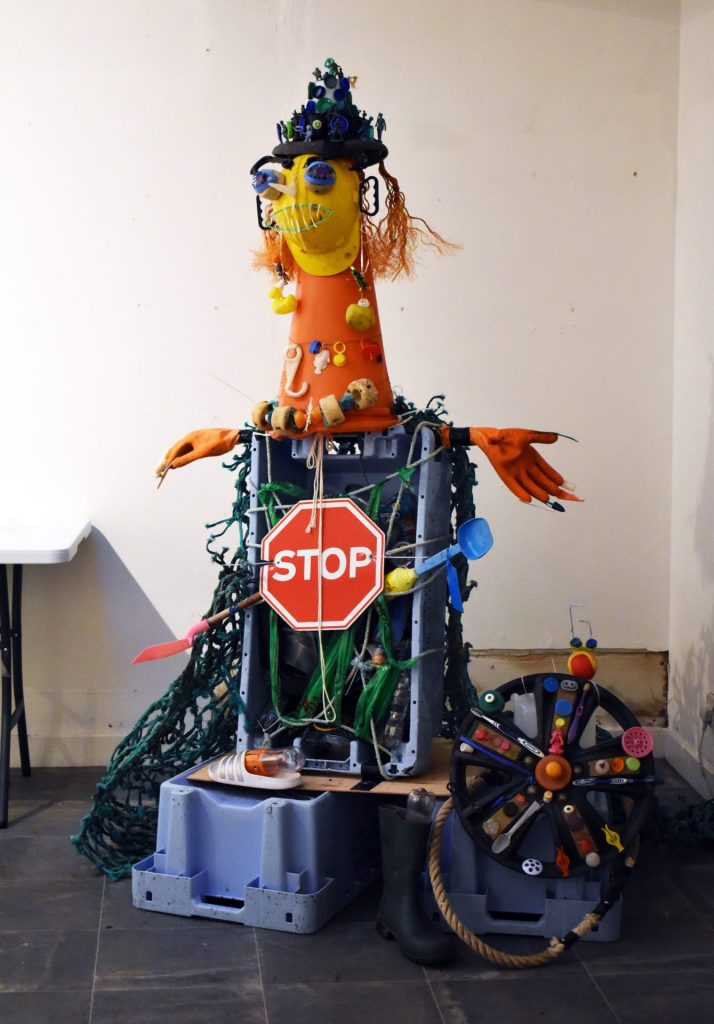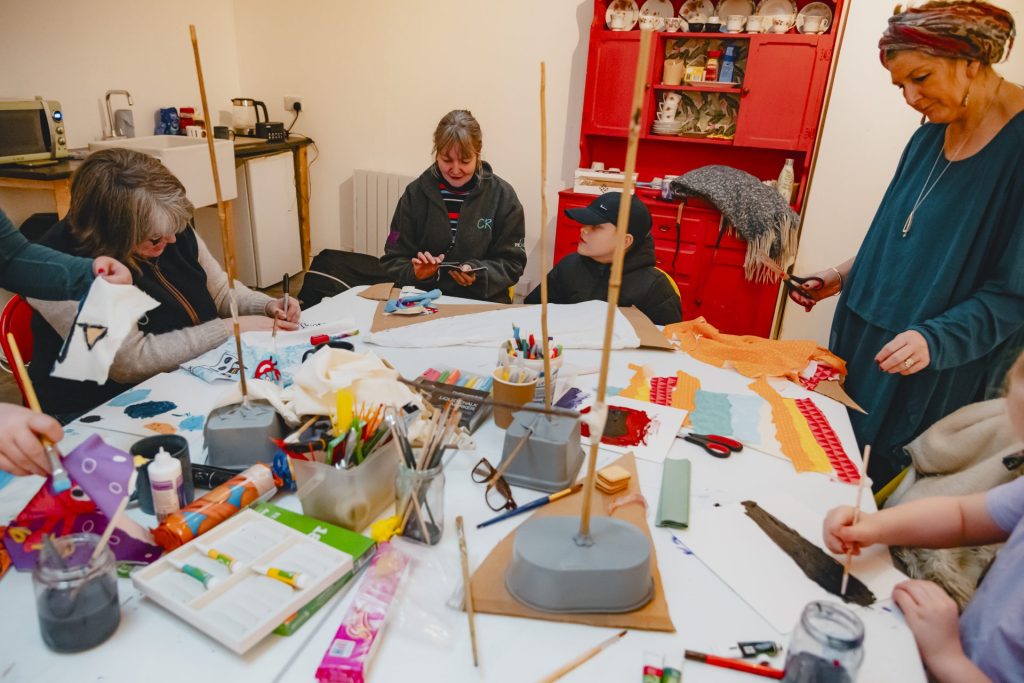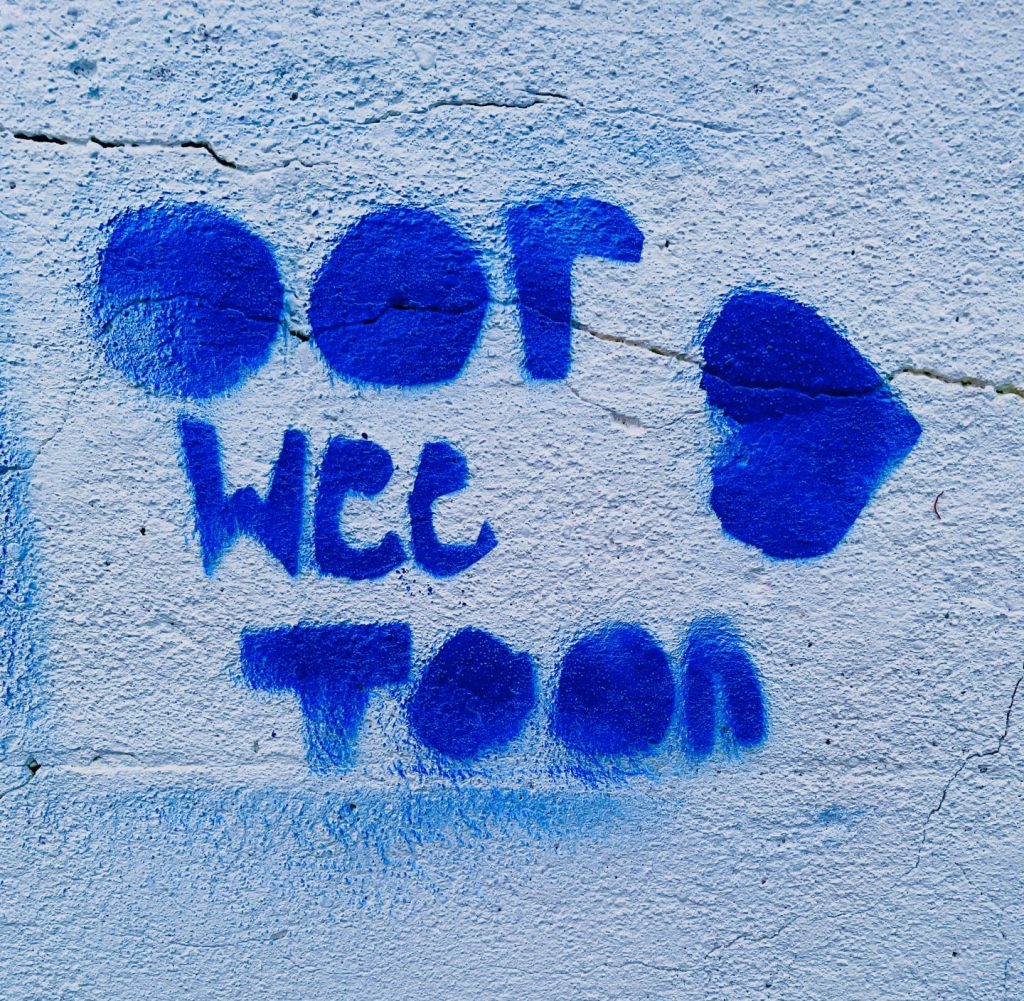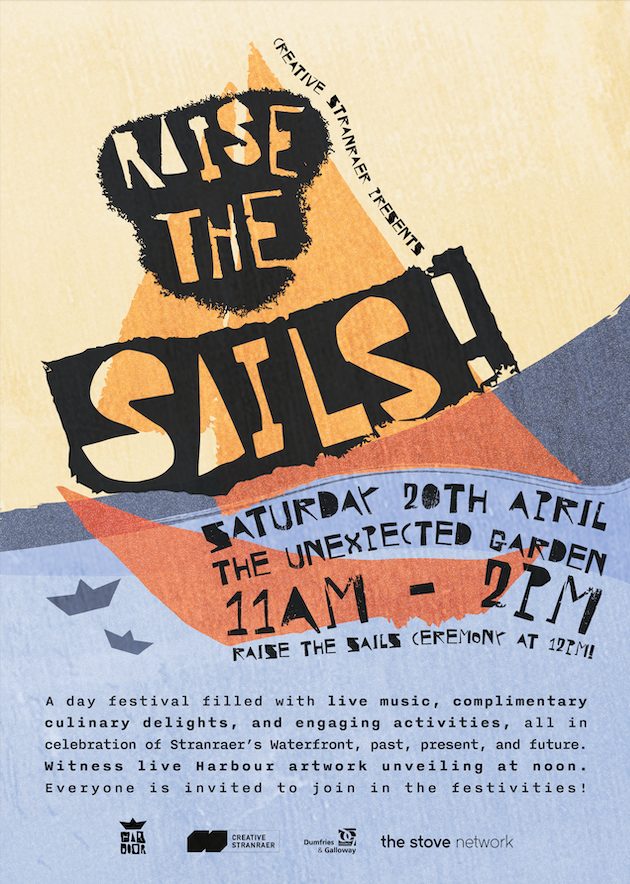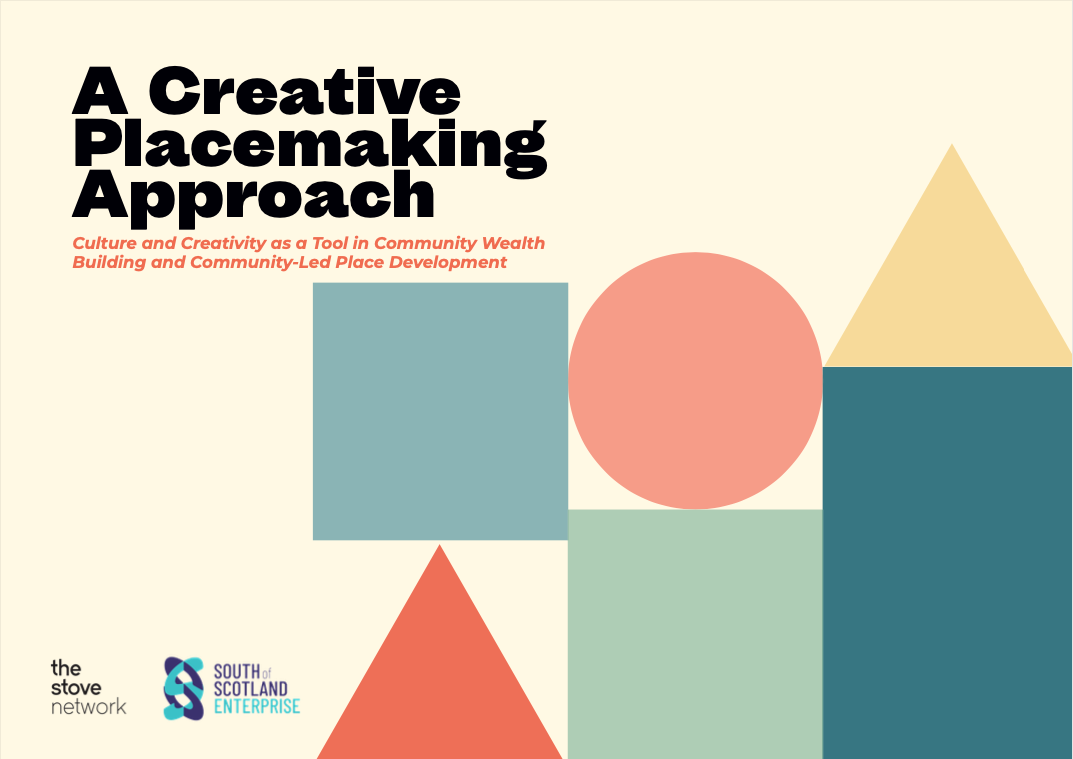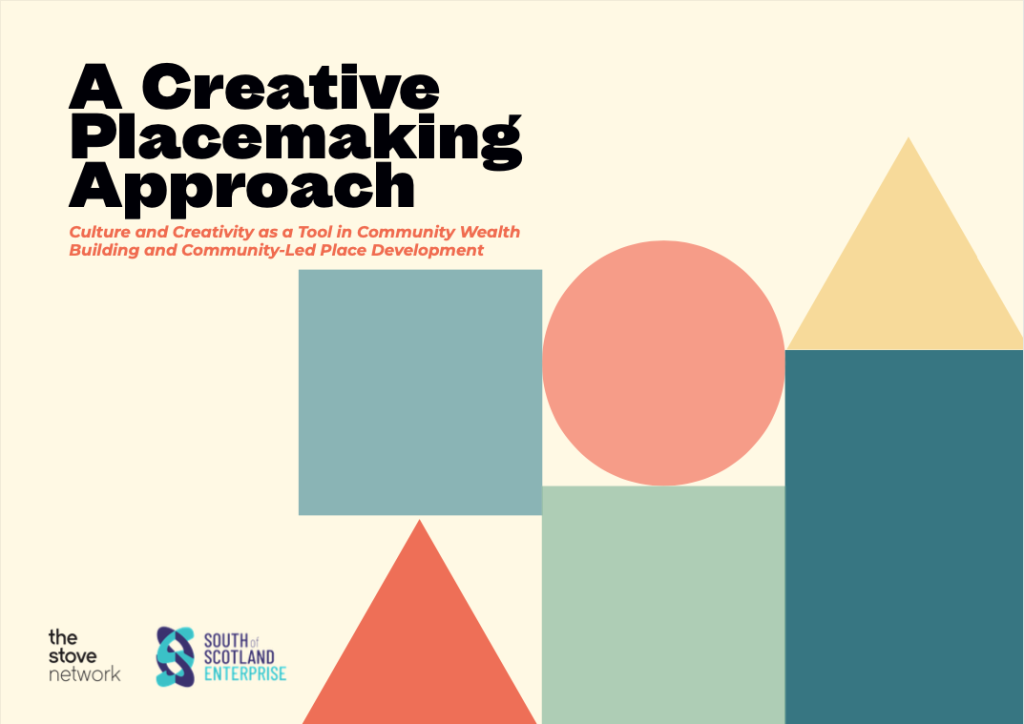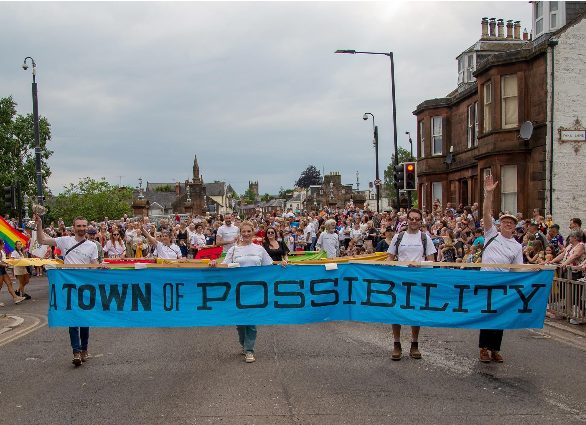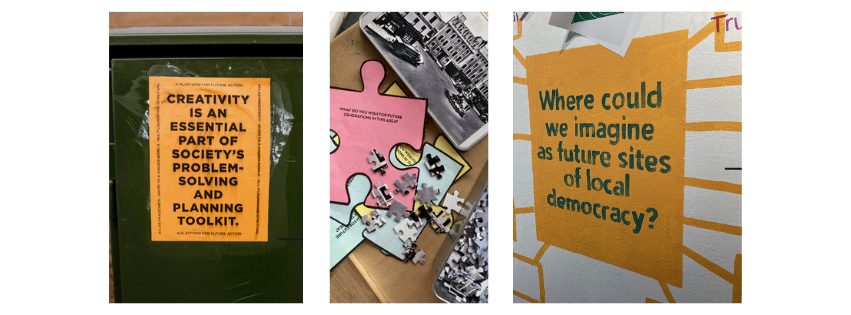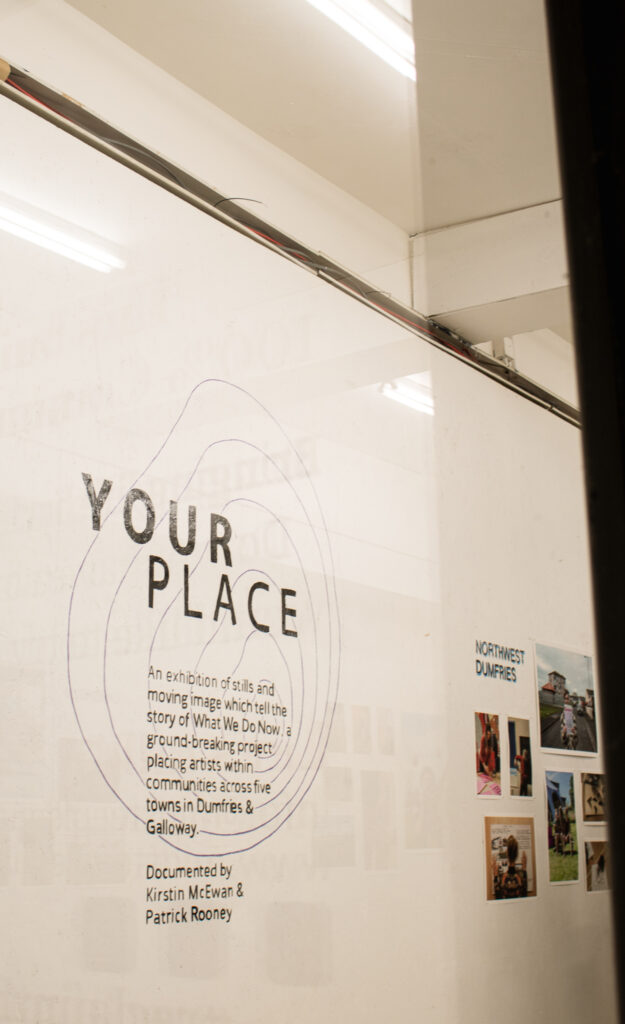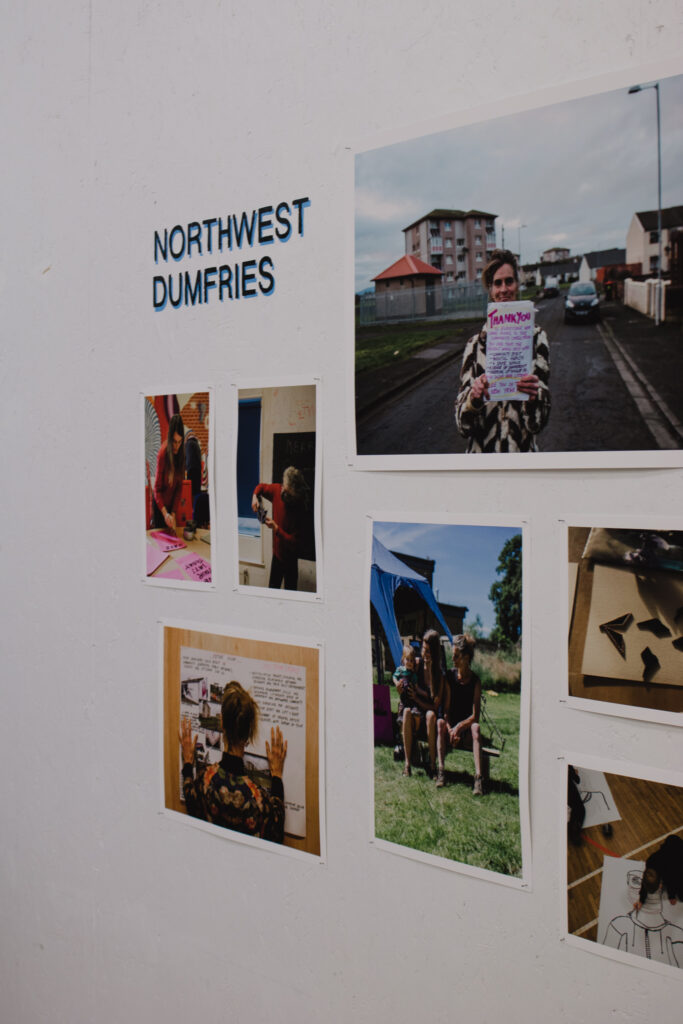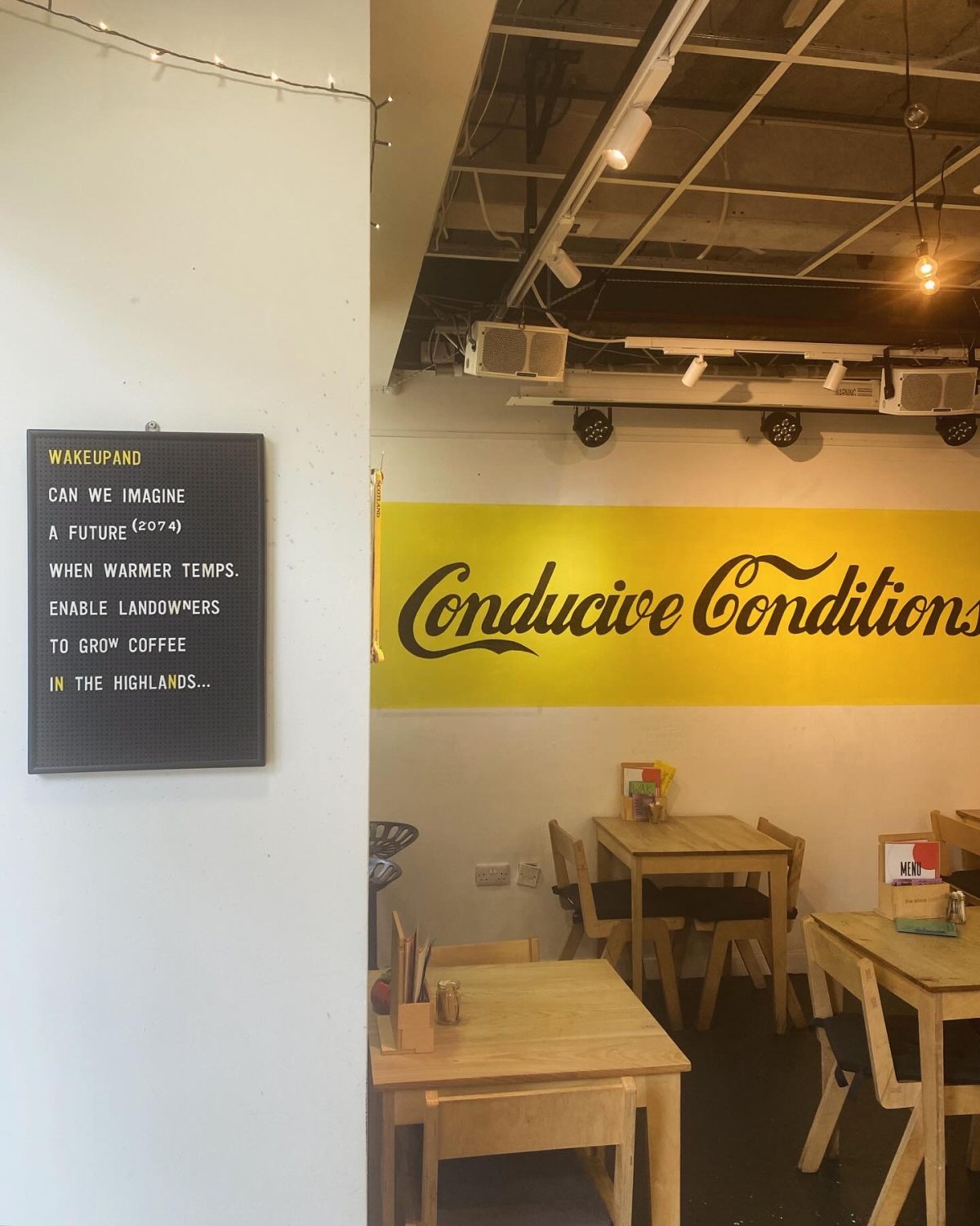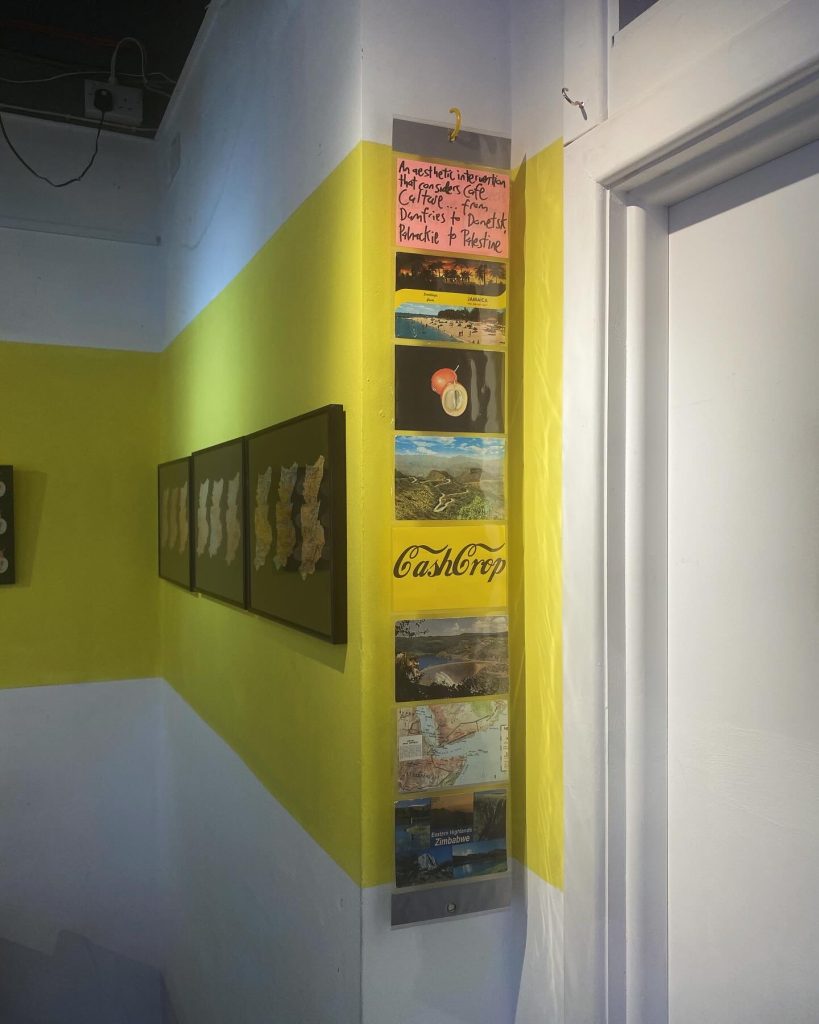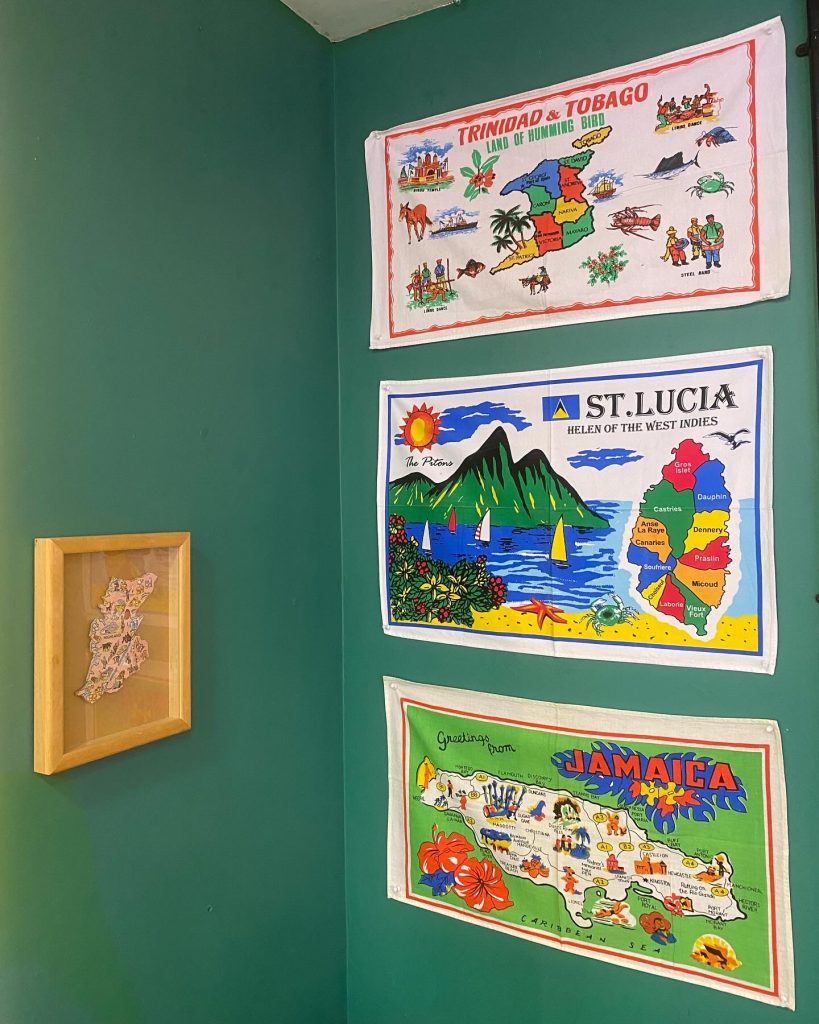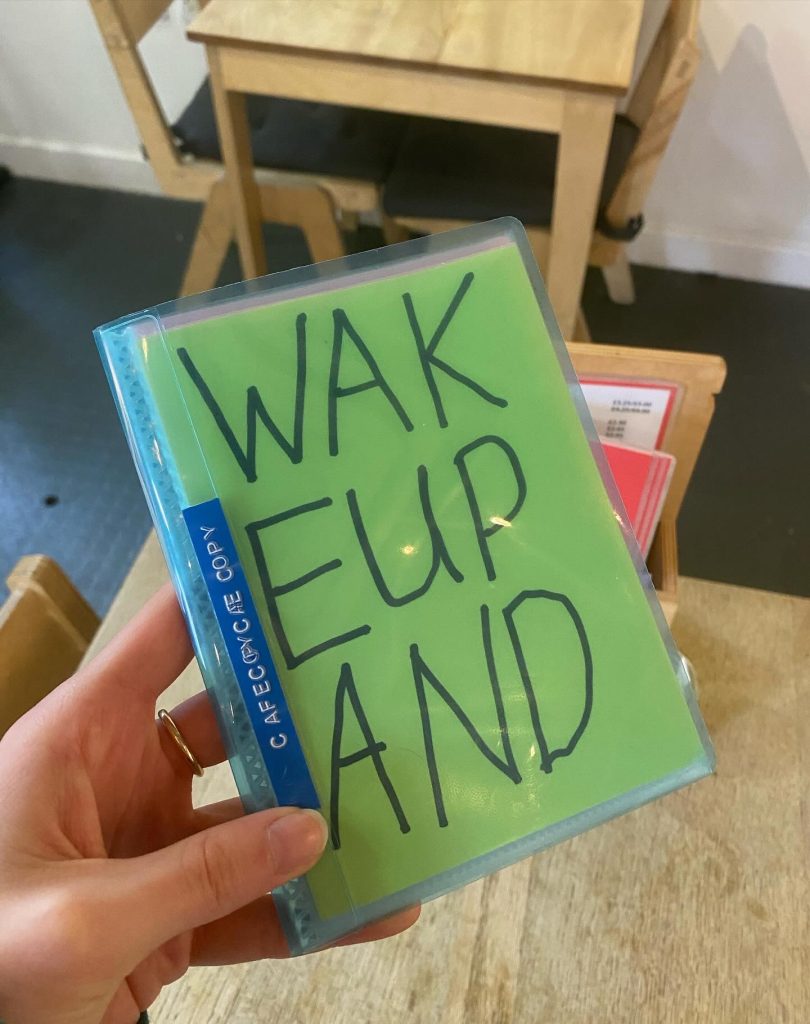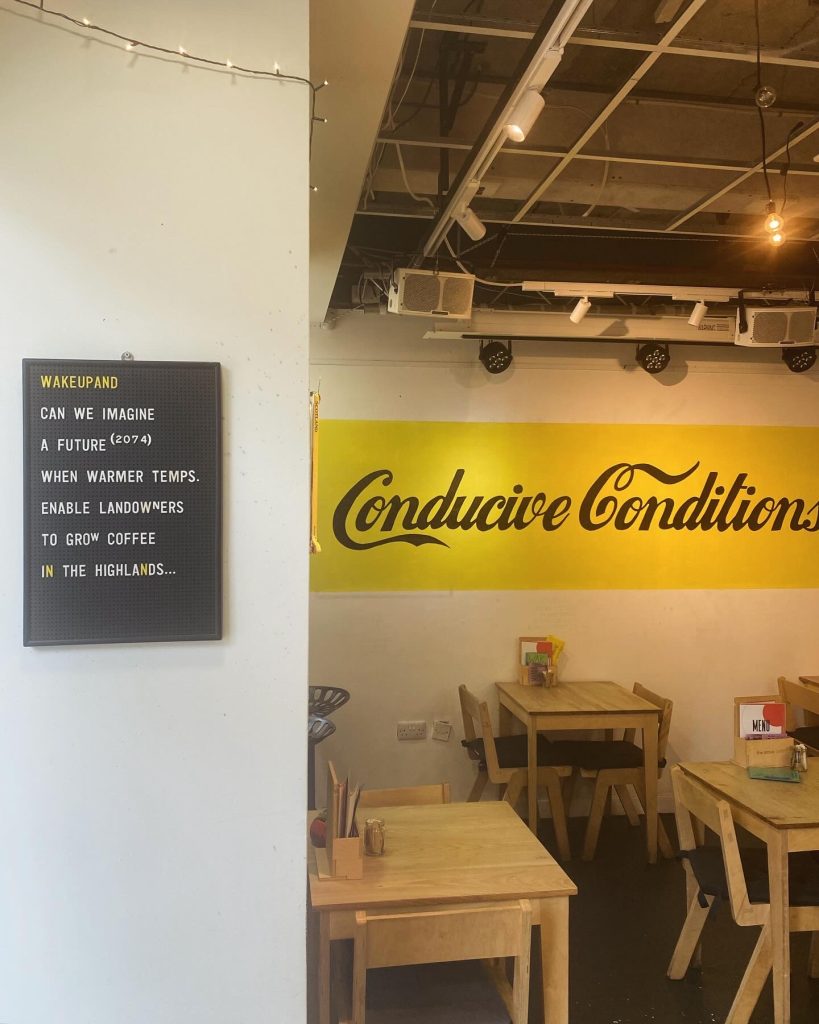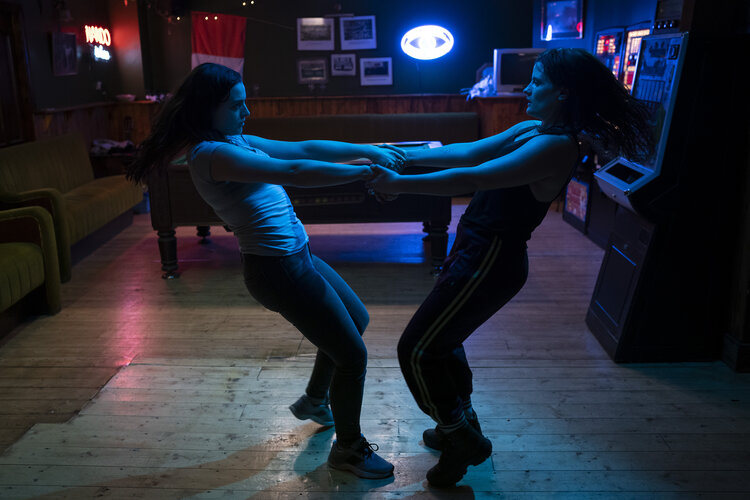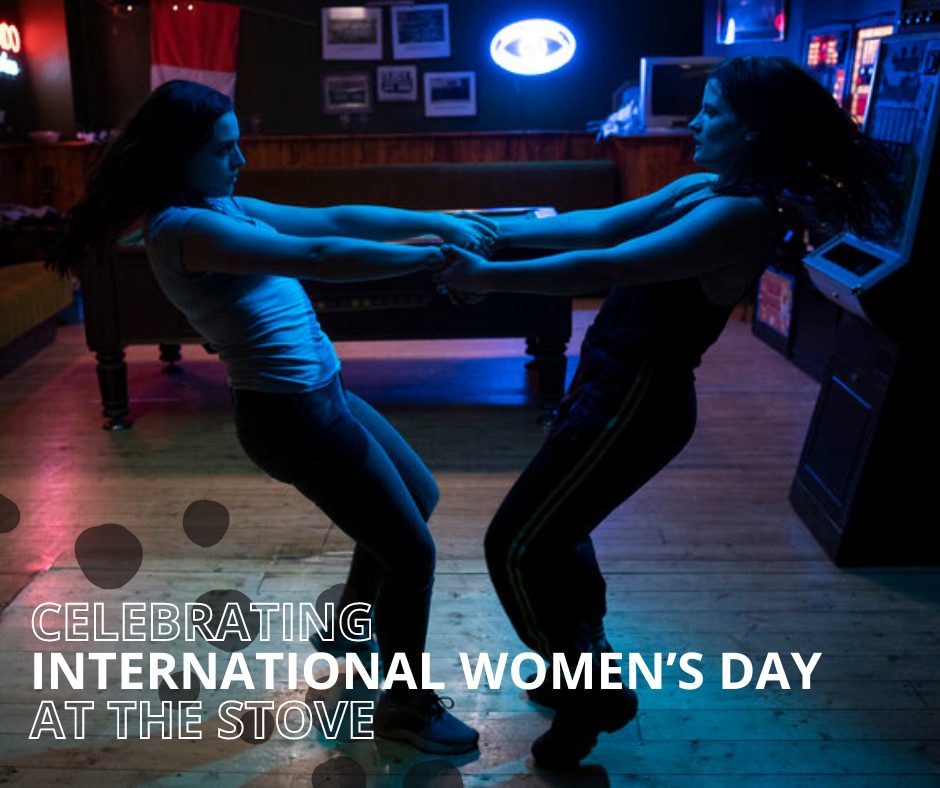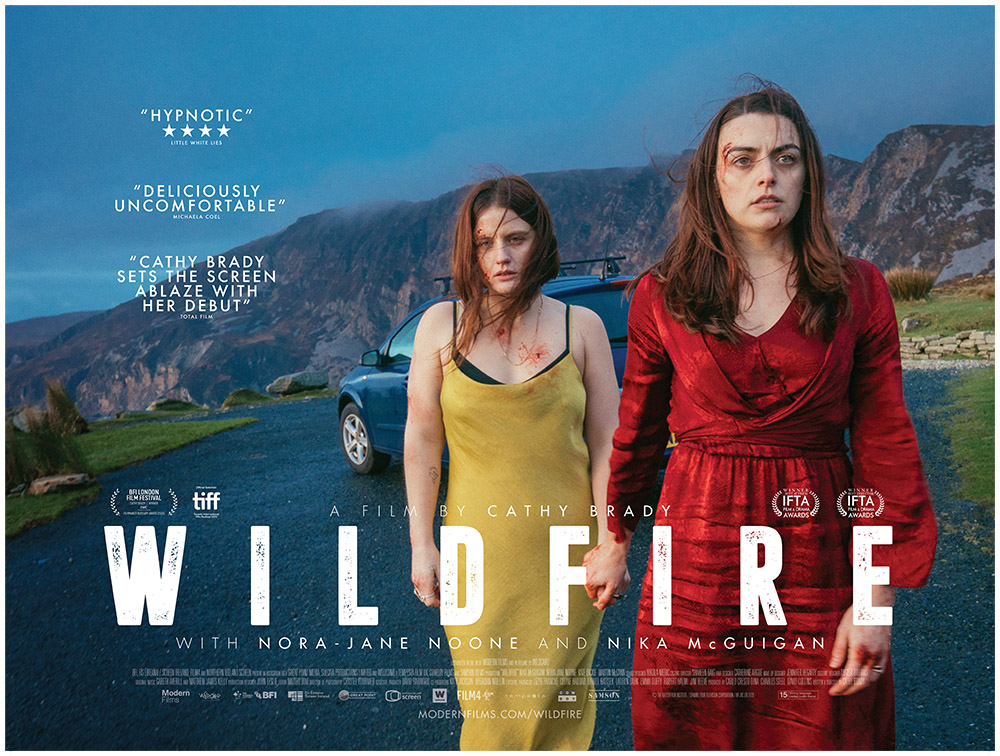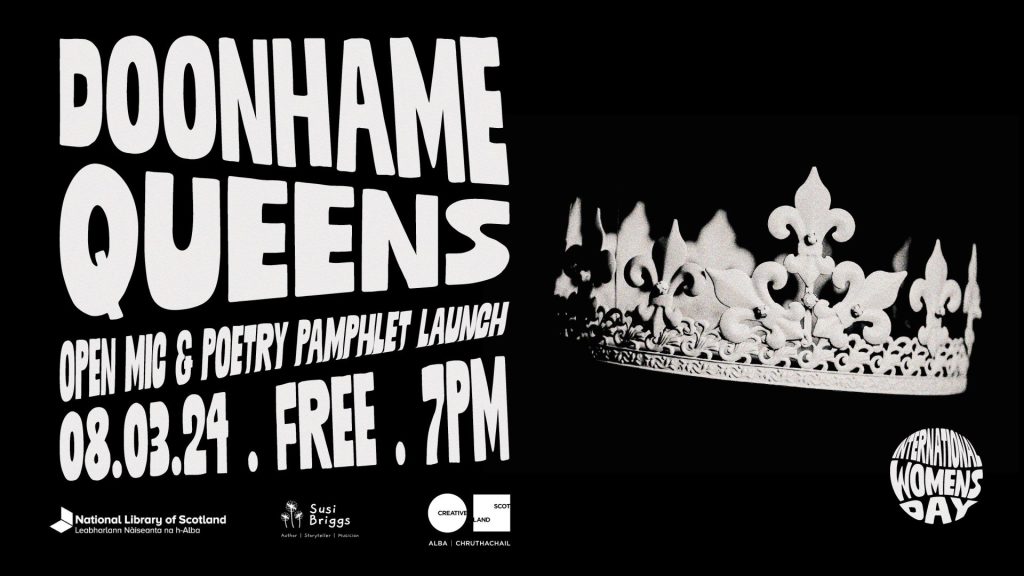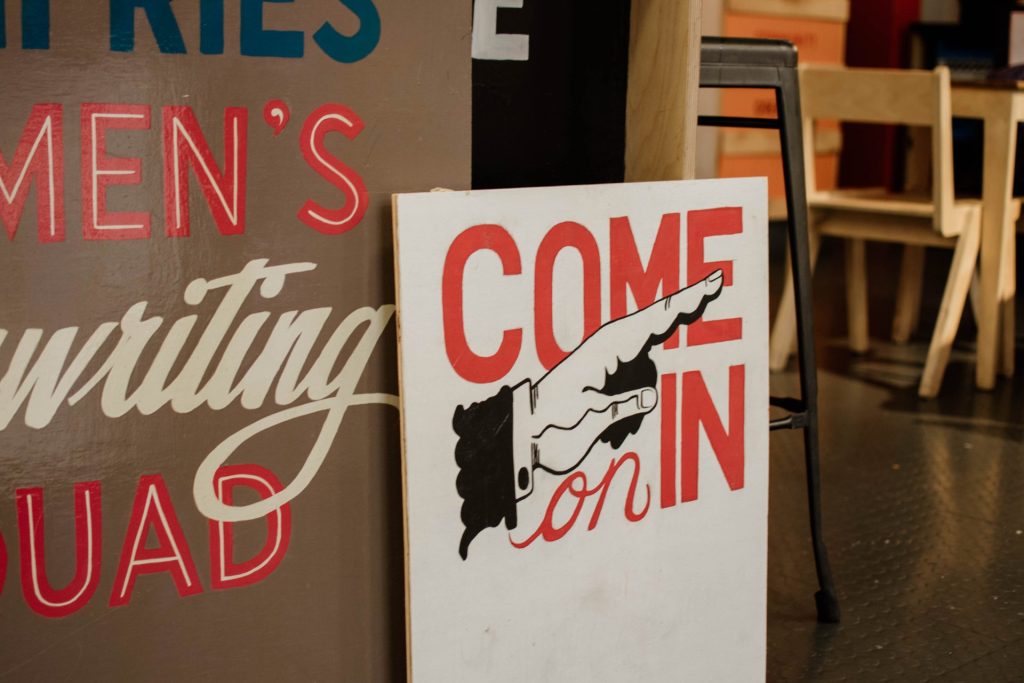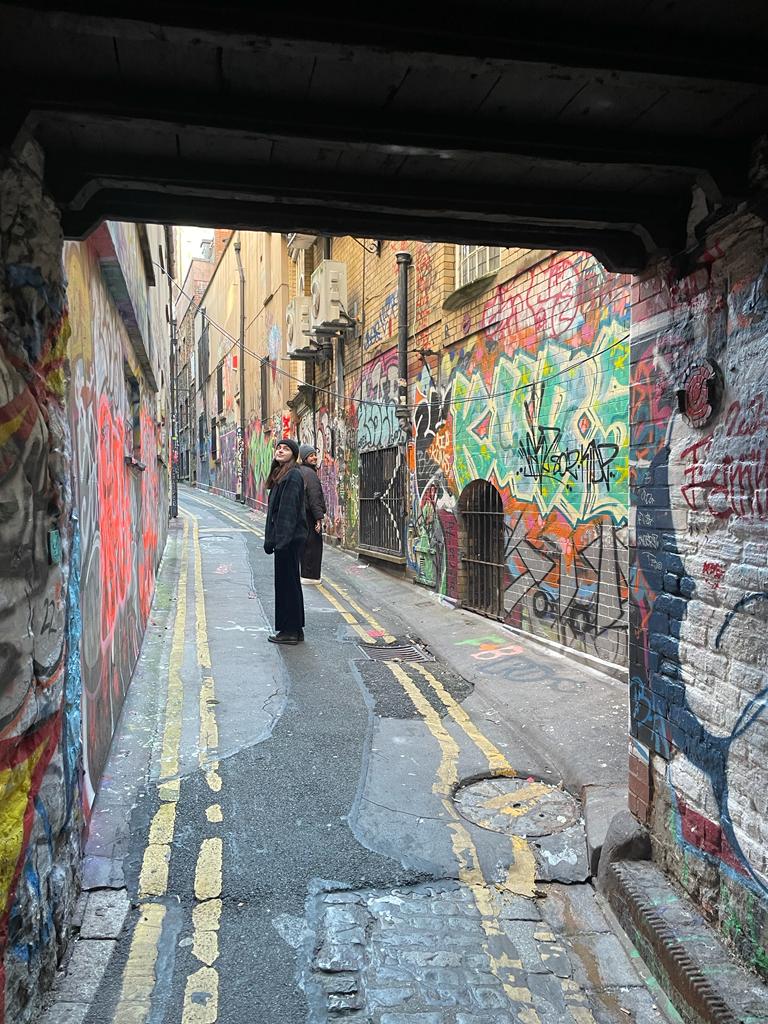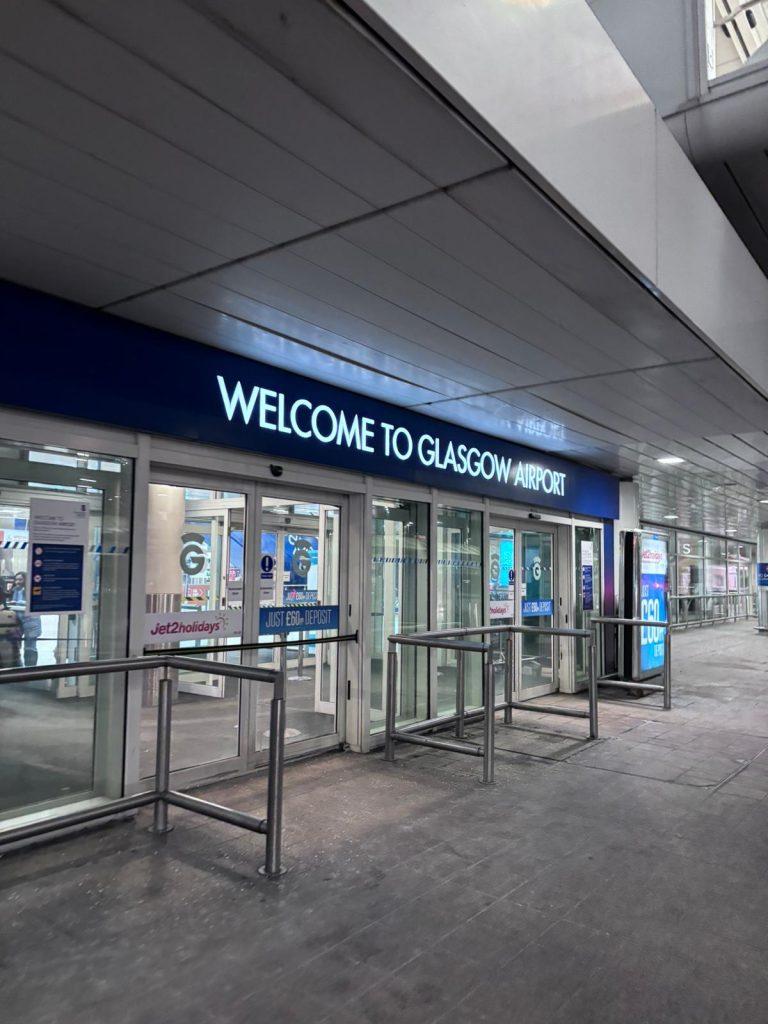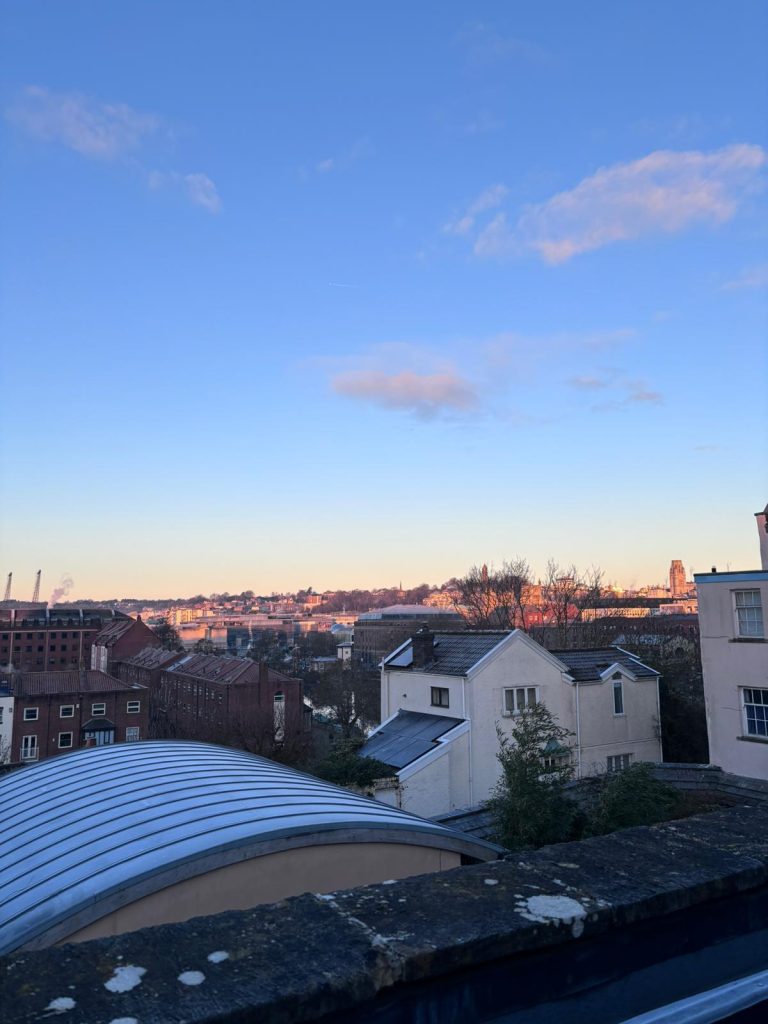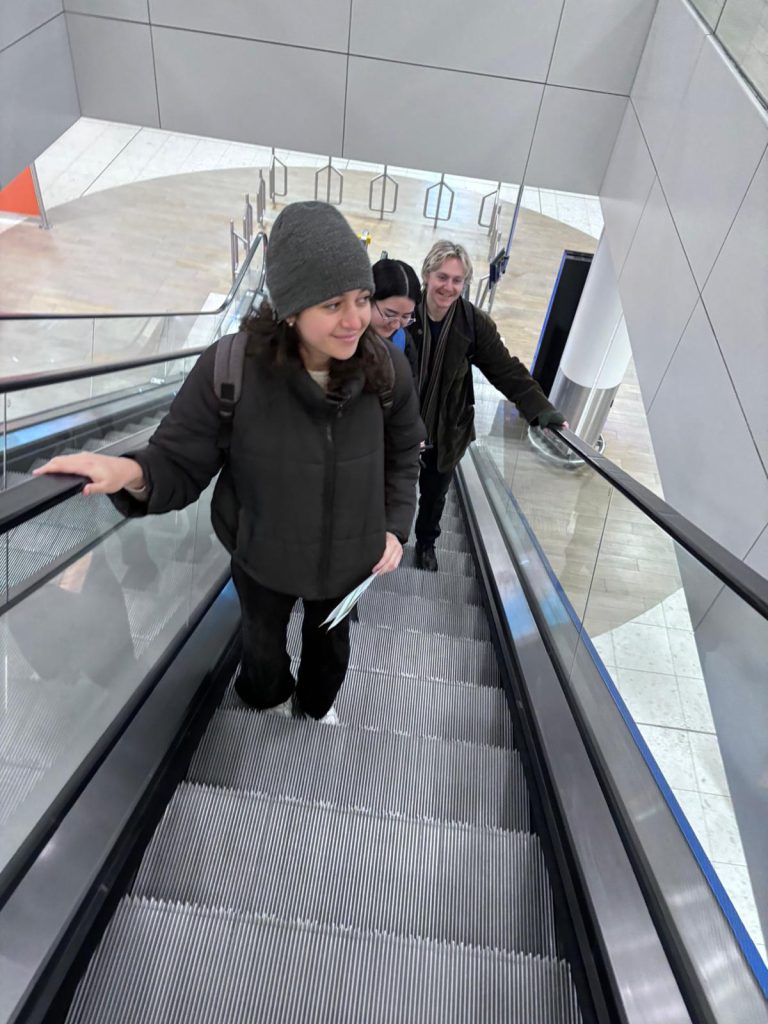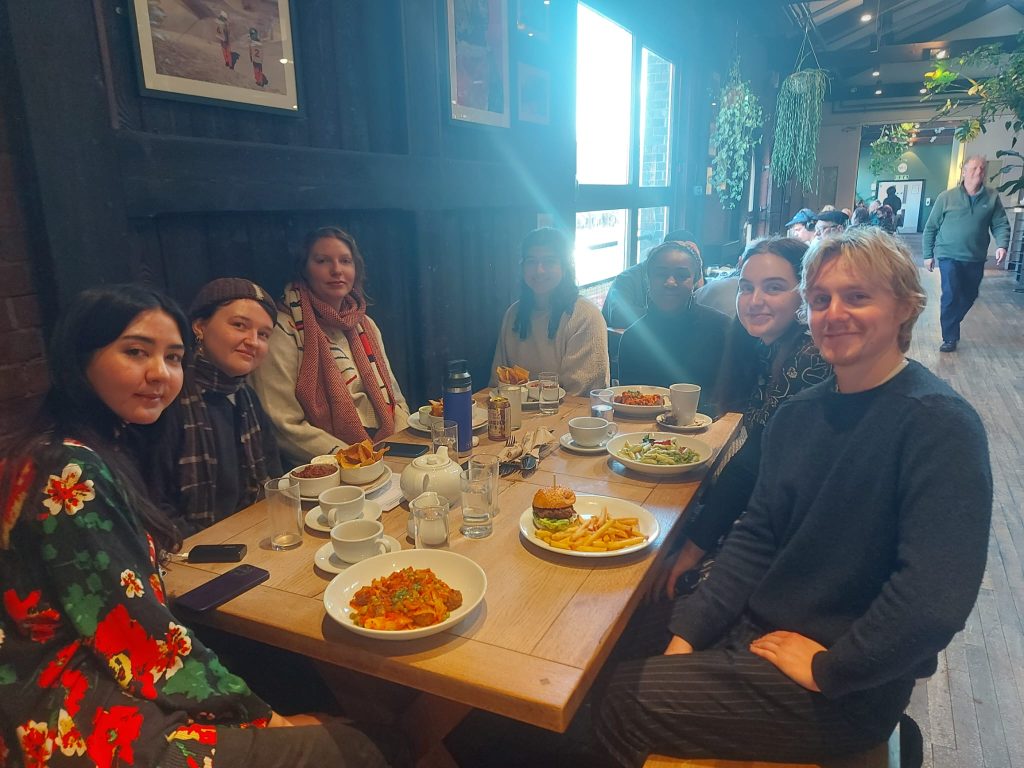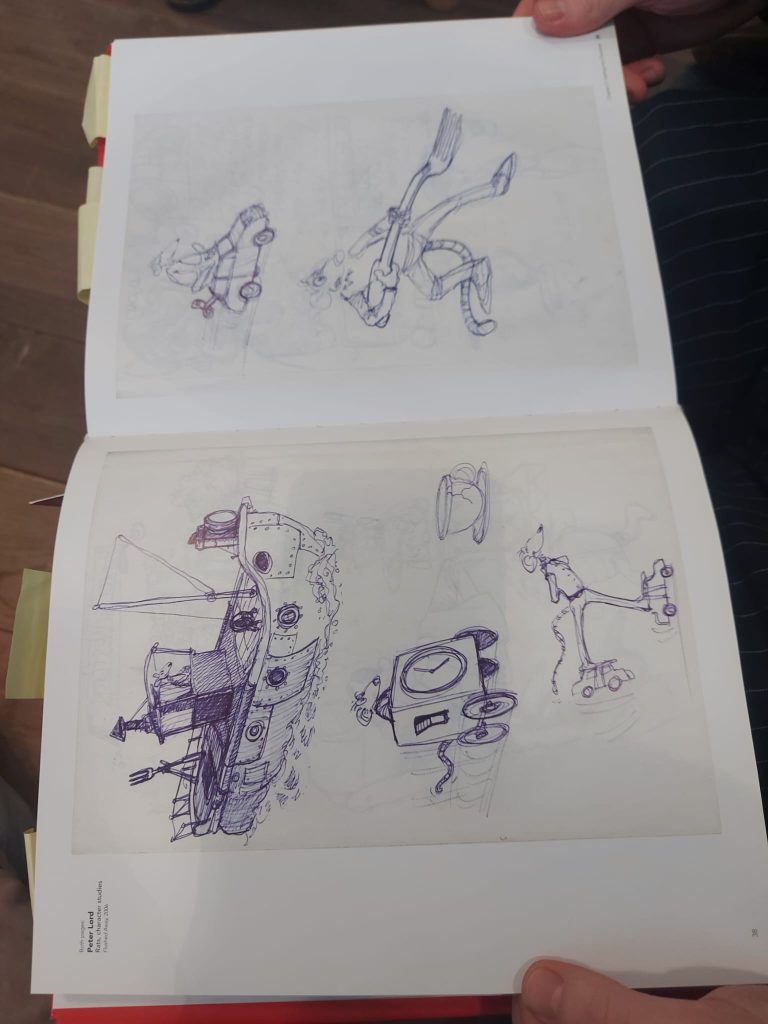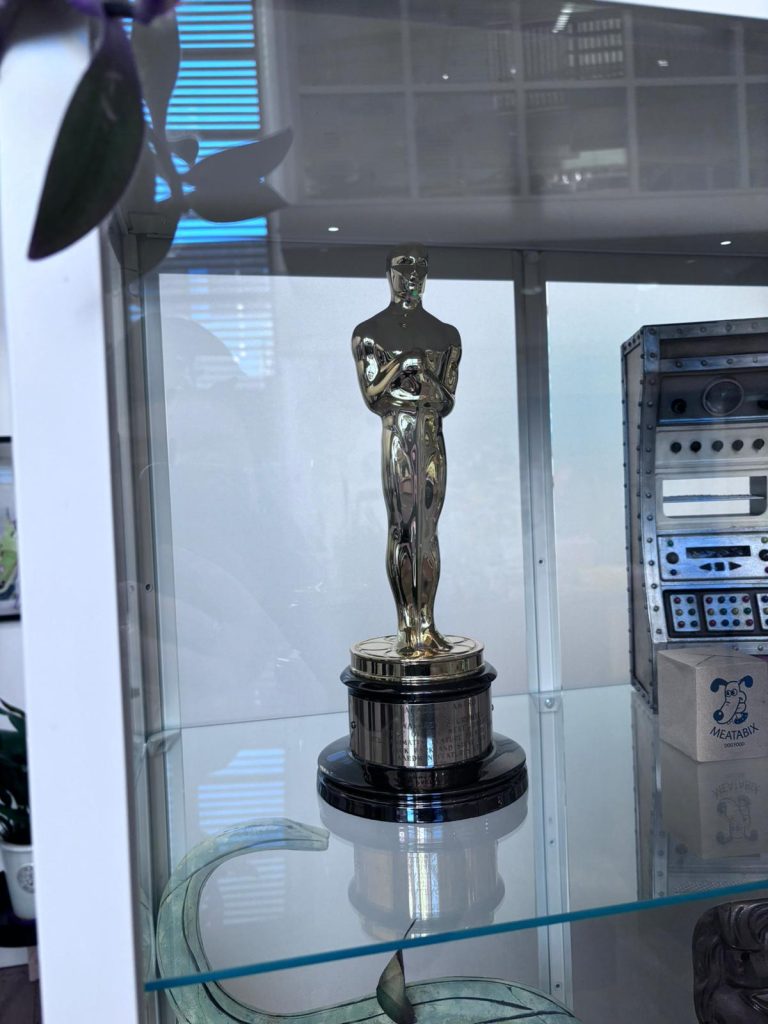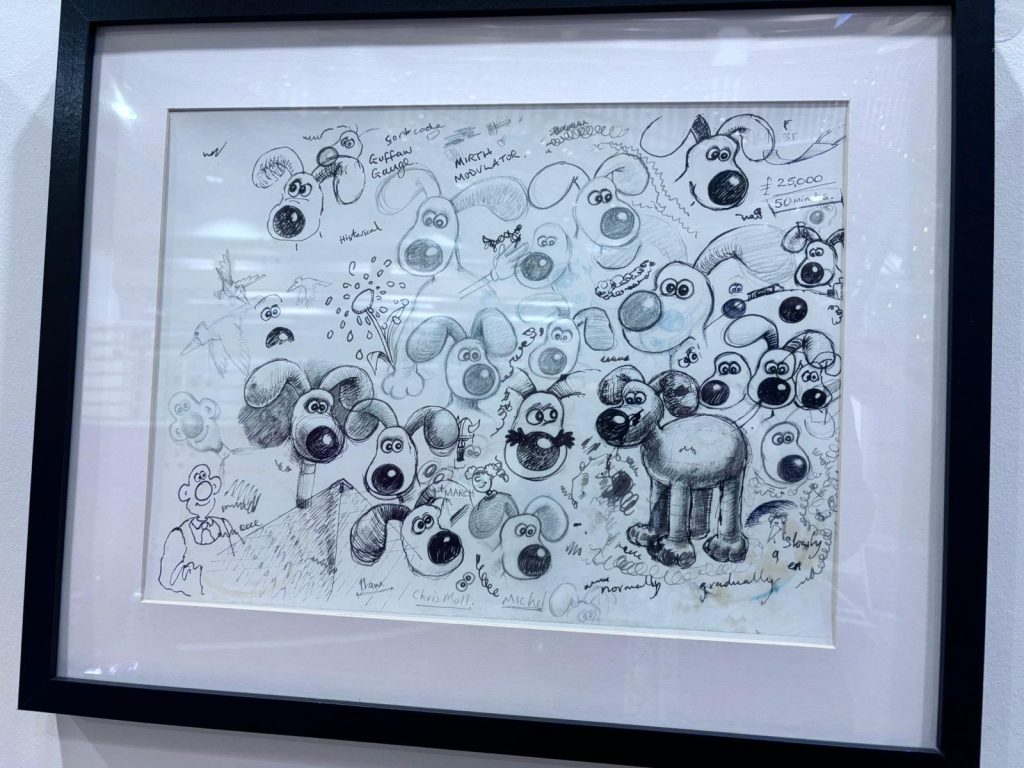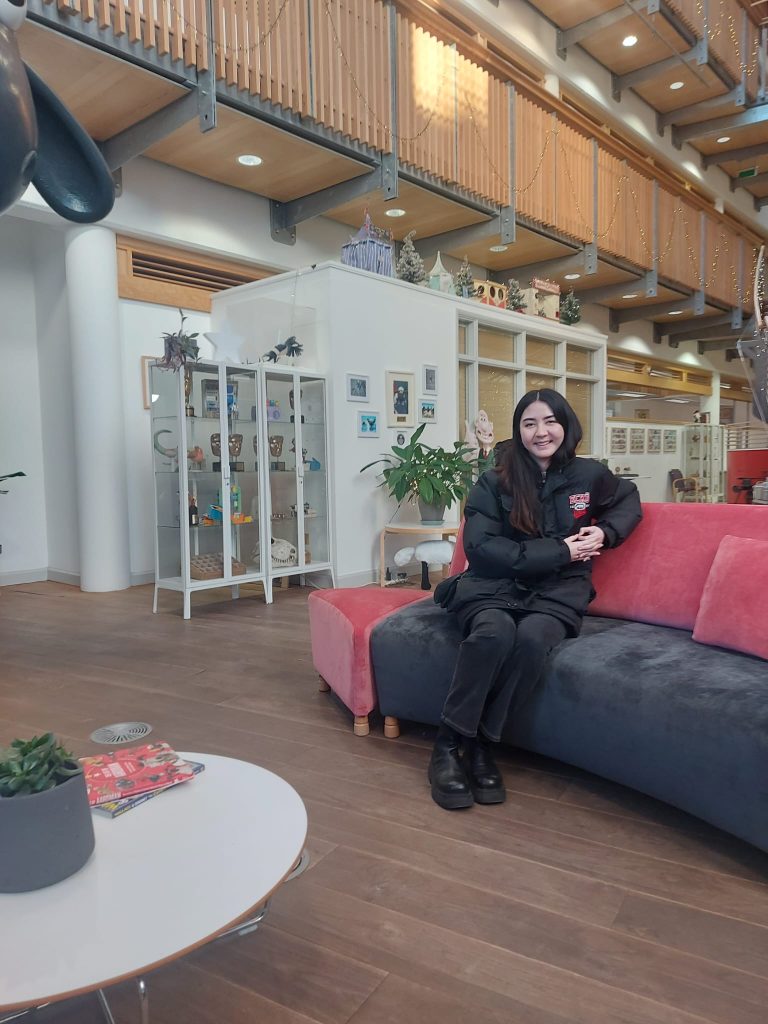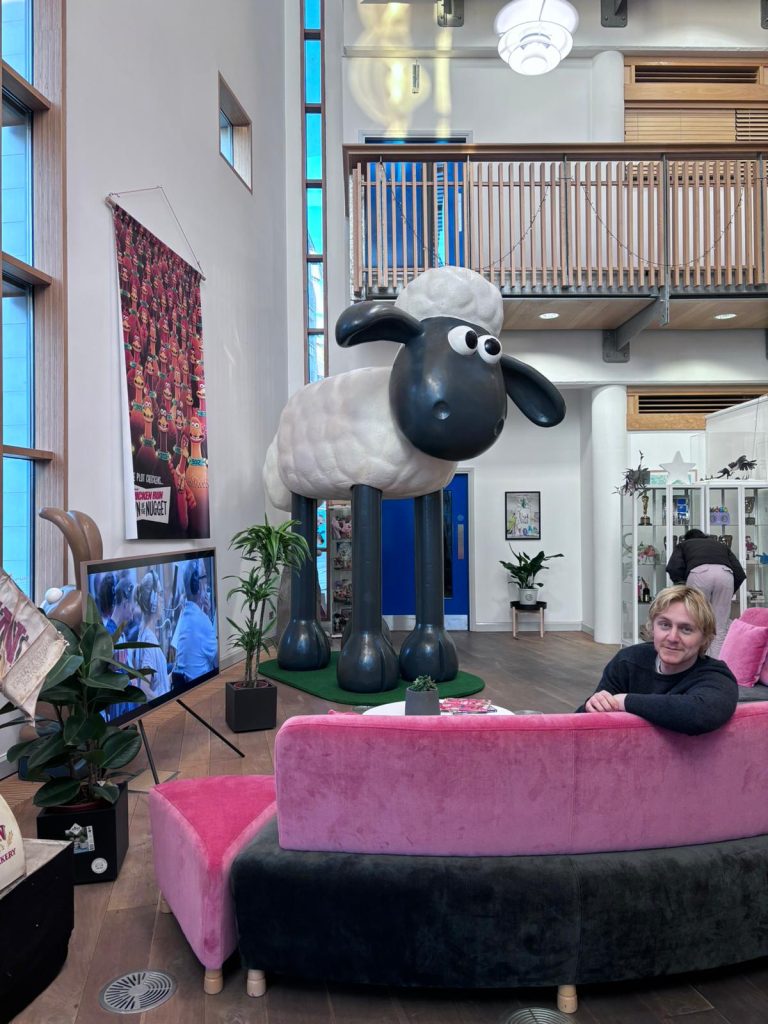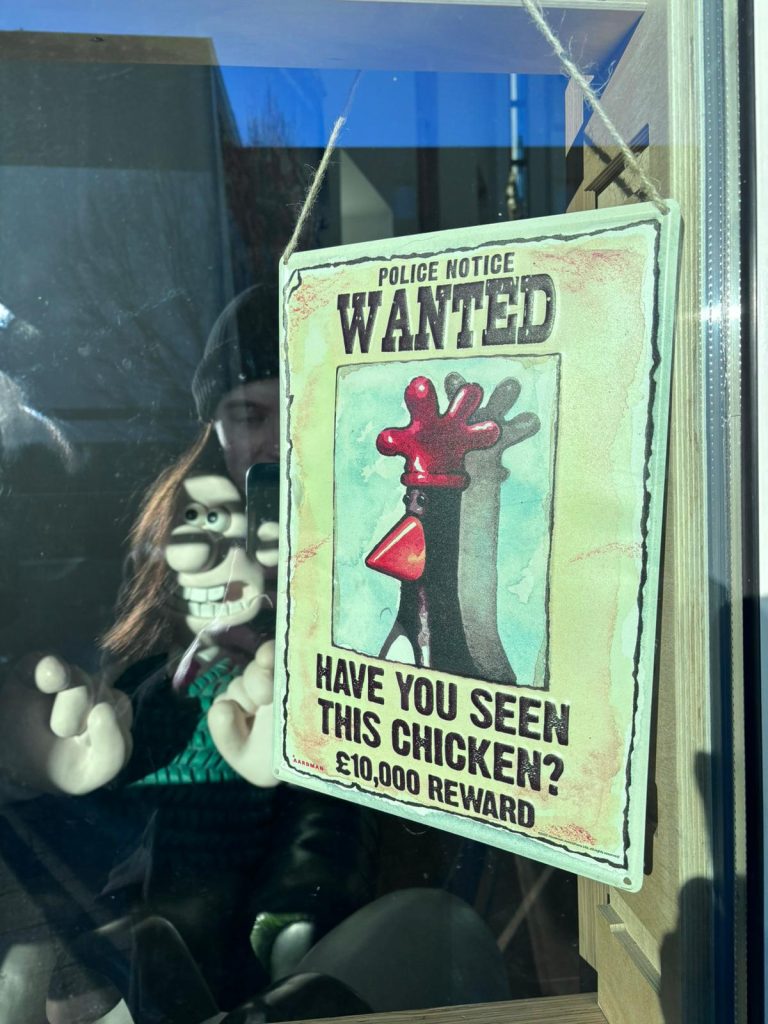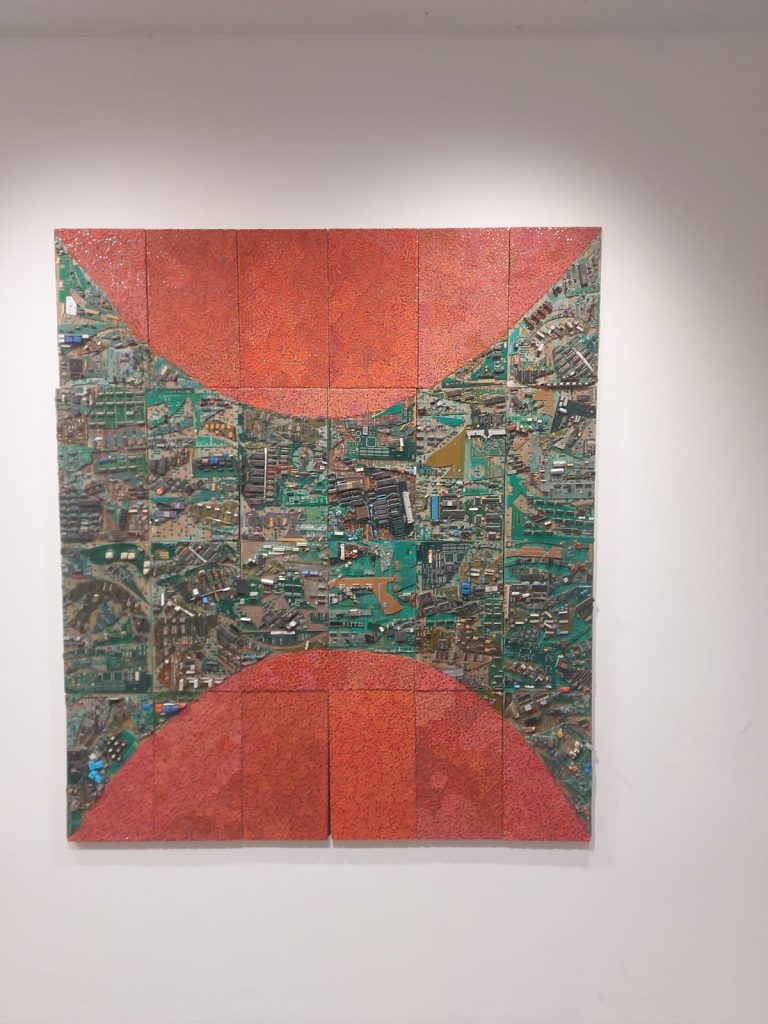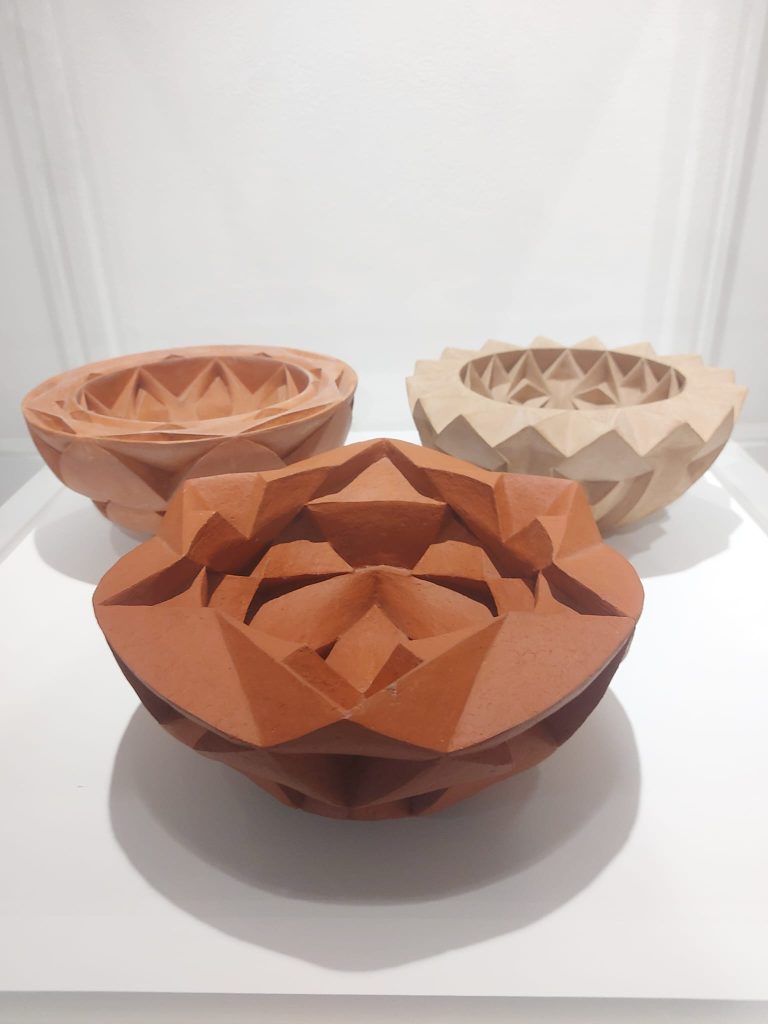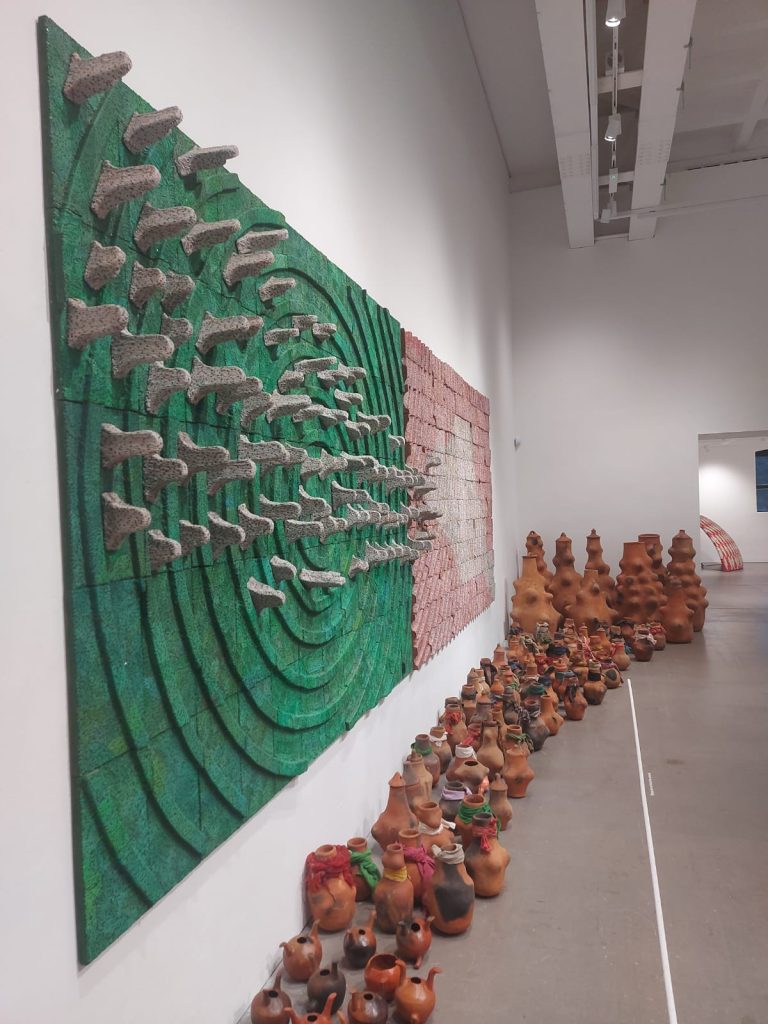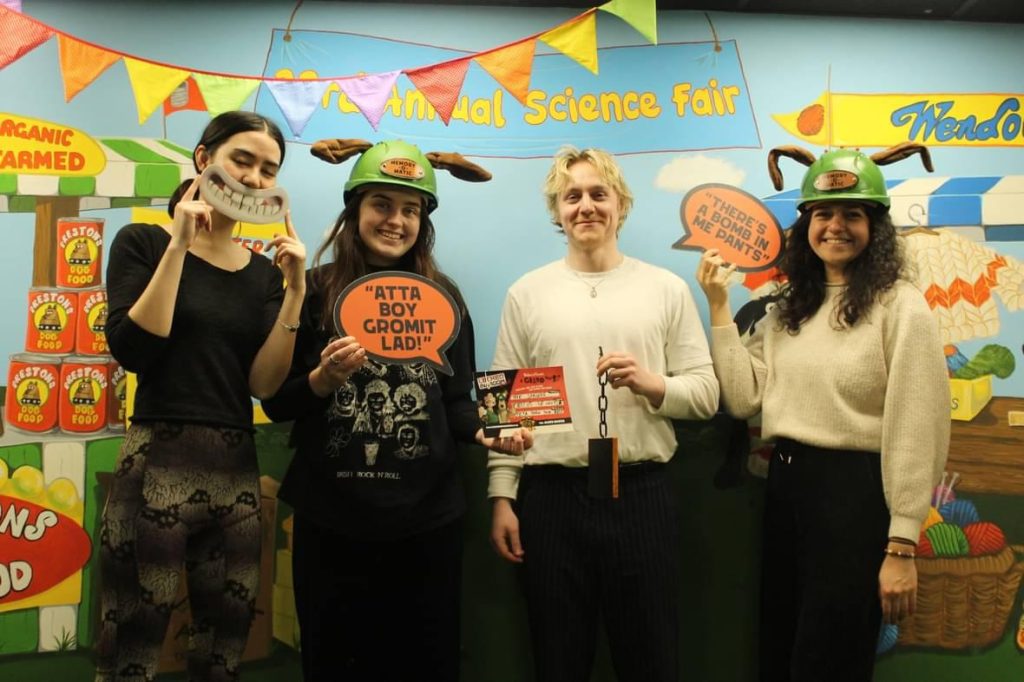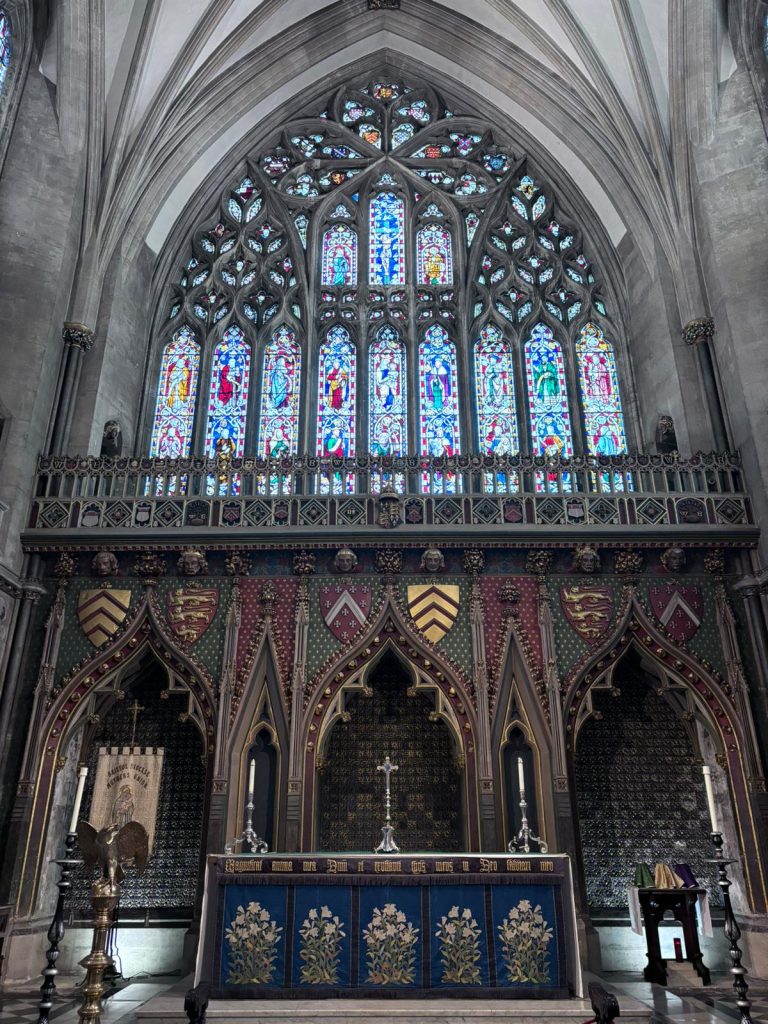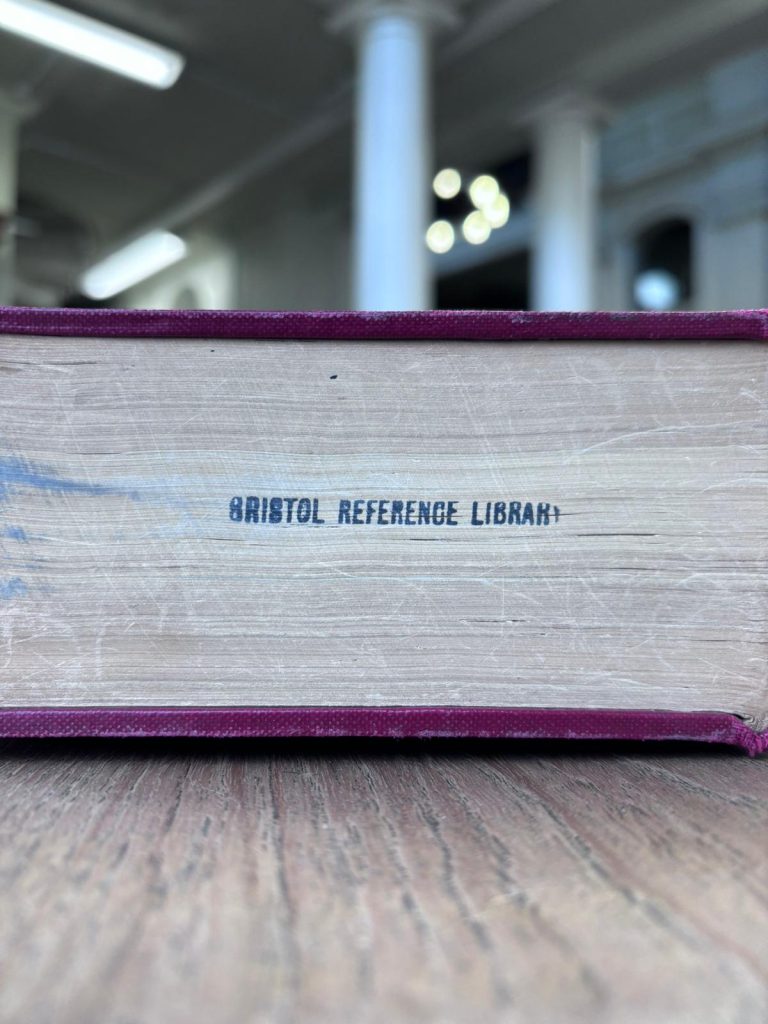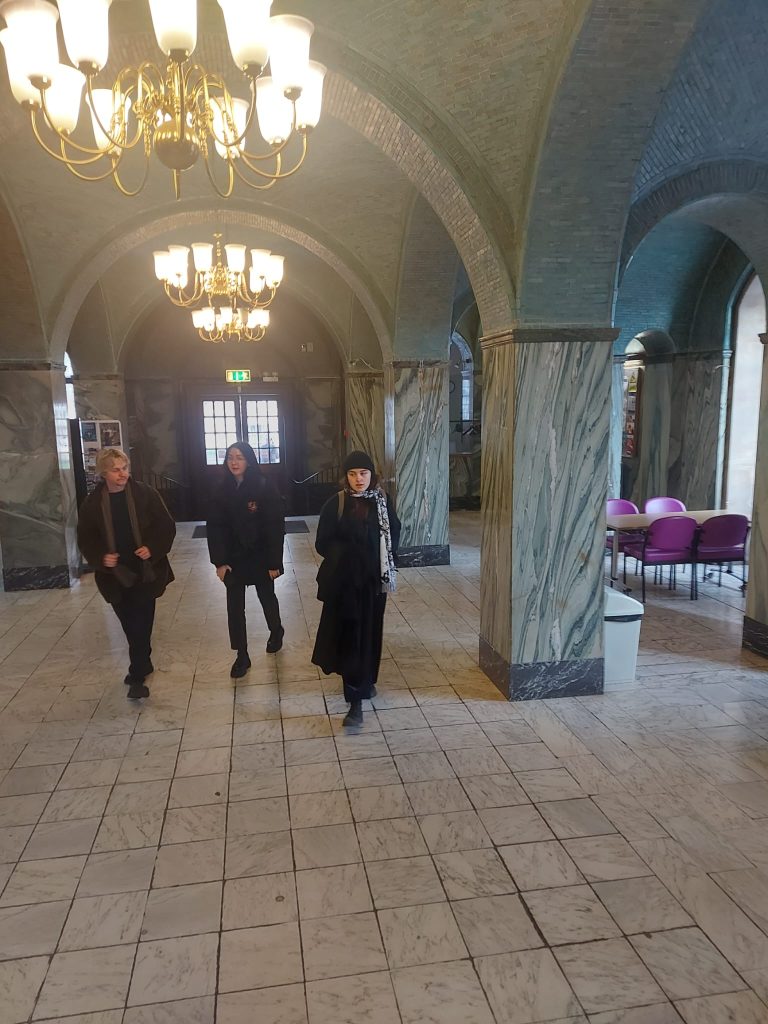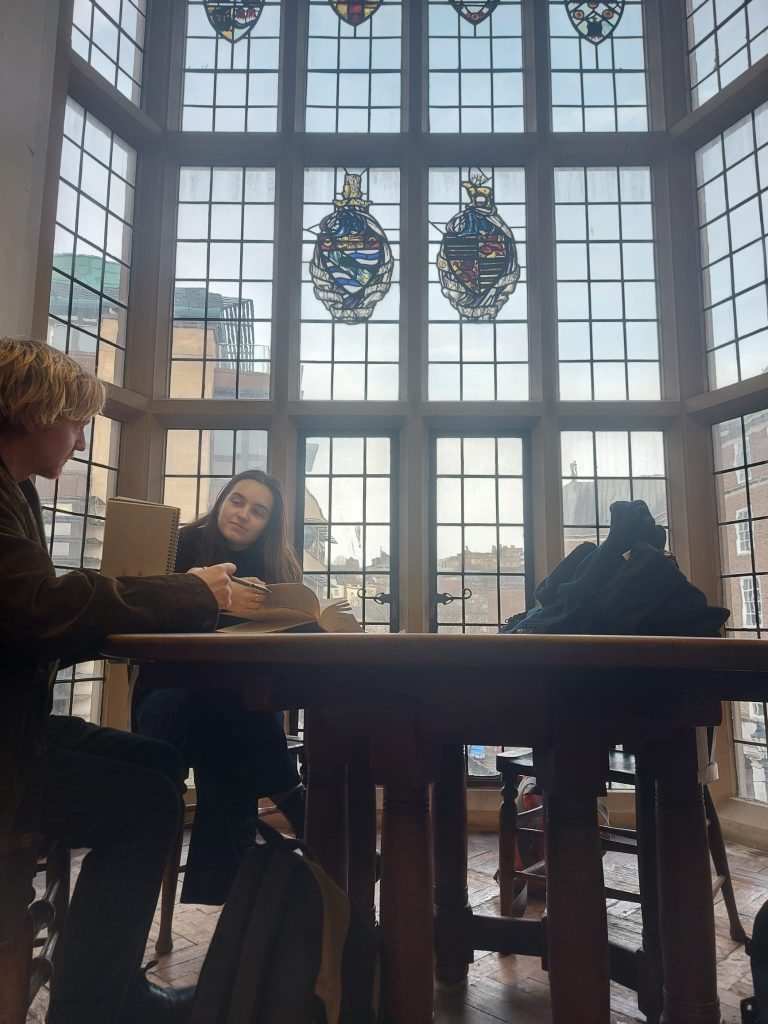The Stove recently played host to a visiting artist, Peery Sloan, a multi-disciplinary artist who actively seeks out opportunities to collaborate with other creatives. Reflecting on the practical application of The Stove’s values, finding inspiration in the commitment to continuous learning, growth, and the pursuit of positive change, Peery documented her visit and experience of working with The Stove team. You can read all about it here:
A Month at The Stove:
Lessons in Collaboration, Empowerment, and Capacity
By Peery Sloan
Upon my arrival at The Stove, my curiosity spanned across various facets of the organisation, ranging from structural organisation and team management to the creative processes at the workplace and community impact. I was eager to delve into every aspect. What immediately caught my attention was the remarkable level of attention and dedication exhibited by the team towards their work.
Contrary to my initial assumption that the focus would primarily be on managerial and organisational aspects, I soon realised that the heart of The Stove lay in the individuals comprising the team. The organisation’s tireless functioning, output, and successes relied on the specific roles, unique talents, and unwavering dedication of each team member. This revelation pleasantly surprised me, highlighting the depth of commitment embedded within the team.
This notion particularly resonated with my initial fascination with The Stove, specifically the prospect of reproducibility. The question arose:
In my own small community in dire need of empowerment, could the ethos and methodology of The Stove be reproduced?
The potential for the creative sector to serve as a catalyst for positive change intrigued me, and Kat Wheeler played a pivotal role in elucidating this possibility through her profound belief in creative placemaking. As evident through her massive initiative, What We Do Now, she is devoted to connecting a variety of partners, artists, and organisations to weave themselves into a supportive network.
Creative placemaking, as I came to understand through Kat’s teachings, involves harnessing the power of the creative sector to shape and rejuvenate communities. It goes beyond traditional urban planning, emphasising the role of arts and culture in fostering a sense of place, community identity, and empowerment. The Stove, with its commitment, epitomises creative placemaking in action, demonstrating how artistic endeavours and community engagement can cultivate hope and instigate positive transformations.
Creative placemaking, epitomised by The Stove’s initiatives, emerges as a beacon of hope for communities aspiring to empower themselves. The organisation’s commitment to generating hope, adapting to change, maintaining a routine output, and offering a replicable model showcases its dedication to this transformative approach.
My journey with The Stove not only prompted a personal exploration into applying its principles to my own community but also highlighted the broader significance of creative placemaking as a potent tool for positive social change.
The impact of these efforts is meticulously tracked, documented, and disseminated by the dynamic communications team, led by the adept Kevin Stewart. Kevin, with his sharp wit and lightning-fast mental processing speed, buttresses the entire team in managing the website, shaping the brand, orchestrating social media activities, and ensuring visibility across all channels. His background in corporate marketing enriches the Stove’s approach by providing a big-picture perspective, seamlessly integrating strategic vision with the practical aspects required to convey a clear and accessible message. He has developed an incredible team consisting of resident tech guru Robbie Henderson, Web & Data Manager, Erin Aitchison, social media wiz and Marketing Officer, and Wren Winters, the personable Venue and Digital Coordinator; their lively office reflects the engaging and communicative spirit of the team.
From artist and Chief Executive Officer, Matt Baker, I learned of the journey from art collective to organisation. Initiated by a small artist collective, the expedition commenced when they recognised a prevailing disempowered attitude within the community, characterised by a lack of belief in their ability to make a meaningful impact or claim ownership. In response, the collective devised a straightforward yet impactful solution: reclaiming public spaces. This manifested through events such as bonfires in the square and boat races in the River Nith, serving as visible demonstrations that change and action were not only possible but also attainable. Over the course of a decade, the collective underwent a transformative evolution, solidifying its position as the indispensable community hub, now known as The Stove Cafe, while simultaneously expanding its influence through diverse programming, partnerships, and projects.
Matt’s profound wisdom, derived from his extensive experience as both an artist and the CEO of The Stove, stands as an indispensable pillar supporting the ongoing evolution of the organisation. His influence extends beyond geographical confines, seamlessly traversing regional boundaries and establishing meaningful connections within the realms of both the arts and civic engagement in Scotland. In meetings, Matt assumes a contemplative and non-dogmatic presence, choosing to speak only when the discourse requires the illumination of a critical question that has yet to be addressed. His judicious approach not only reflects a discerning insight but also underscores the strategic importance of his contributions in shaping the organisation’s trajectory.
Examining the organisational systems in place at The Stove Network, it became evident that flexibility was integral to their operations. Graham Rooney, Operations Director, designs and implements systems to make the workflow smoother and more efficient. He recently unveiled a new two-calendar system with a rotating two-week cycle; the approach remained dynamic. Despite the visual complexity of the Google Calendar resembling a pile of oriental carpets, the team actively utilised and reviewed it on a weekly basis, incorporating changes as needed. Graham gathers the feedback, shifts, and changes the structure as necessary. This adaptability was crucial in navigating the evolving landscape of The Stove Network.
One pivotal insight into the organisation’s ethos emerged during a meeting with the What We Do Now team, where “reflection” was identified as a core value. Subsequently, I witnessed this commitment in action when concerns arose about some individuals being overworked. The ensuing discussion transcended the immediate issue, delving into the team’s overall capacity and the organisation’s well-being. The prevailing high-achieving culture, driven by passion, had set demanding standards, resulting in a substantial output that now necessitated a careful evaluation. The discourse was marked by genuine interpersonal concern rather than the resentment and frustration often observed in other grassroots spaces.
The central inquiry revolved around the imperative for immediate changes to foster mutual support and prevent burnout. This contemplation brought forth reflections on the sustainability of maintaining elevated standards, the feasibility of augmenting the team through new hires, and the unavoidable necessity for an upsurge in funding. This, in turn, ignited deliberations on who would shoulder the formidable responsibility of securing such resources.
In the midst of this complex financial landscape, Lindsey Smith, the Finance Director, emerges with a daunting but vital role. She skilfully navigates the intricacies of funding, adeptly managing and tracking finances, and delving into the intricate details associated with budgets and funds. Amidst the genuine concerns surrounding financial matters, Lindsey maintains a surprising calm demeanour. Instead of merely emphasising constraints dictated by the budget, she tirelessly seeks innovative solutions, striving to find a pathway that enables the team to achieve their objectives within the financial parameters. Her approach reflects not only financial acumen but a profound commitment to ensuring that financial considerations do not hinder the team’s pursuit of its goals.
This ongoing dialogue at The Stove Network centers around the concept of capacity, exploring the boundaries of individual endurance and contemplating its application across the entire organisation. This introspection underscores the organisation’s commitment to maintaining a healthy equilibrium between passion-fuelled excellence and pragmatic goal-setting, ensuring sustainable growth and well-being within The Stove community.
Under the guidance of Mia Osborne, the Creative Spaces project nurtures the artistic endeavours of three young talents (Korey Patterson, Martha Ferguson, and Sahar El Hady) over a span of ten months, allowing them to manifest a project of their own choosing. This particular facet of the Stove captivated my admiration, evoking a sense of nostalgia wishing I had been involved in such a dedicated incubation mentorship a decade earlier. Graciously, Mia extended an invitation for me to impart my insights through a workshop.
I settled upon the topic of “How to Write an Artist Statement,” a choice stemming from the perpetual challenge it has posed throughout my artistic journey. Crafting an artist statement is an unavoidable task for a practicing artist, essential for seeking opportunities and advocating for one’s creative identity. The enthusiasm and active participation within the Creative Spaces group proved to be nothing short of infectious. Together, we engaged in dynamic brainstorming sessions, meticulous editing processes, and collaborative workshopping, navigating the intricacies of crafting distinct and compelling artist statements. Through this immersive experience, I bore witness to the core essence of the program – a collaborative space designed to inspire, provoke thought, and actively engage with young artists, all while presenting them with valuable opportunities and enriching experiences.
Another compelling exploration was the first event I attended at The Stove Network, the Gaither Inn.
Designed as a community dinner to foster engaging discussions and craft a manifesto of hope, the evening was skilfully guided by Martin O’Neill. He prompted reflections on the elements instilling hope, the qualities inherent in spaces generating hope, and how to manifest it in the present.
This inquiry led me to the concept of “Homemade Mutant Hope Machines,” introduced by Martin through his association with the revolutionary London queer organisation, Duckie.
These machines, as defined by Duckie, are “emergent, autonomous, and adaptive forms and processes that routinely generate hope in the possibility of better worlds for people on the margins.” Strikingly, it became apparent that The Stove’s programming aligns with the characteristics of a Homemade Mutant Hope Machine – an autonomous creation, adapting when necessary, consistently producing outcomes, and being replicable all while capable of encouraging civic change.
Operating at the intersection of arts and community engagement, The Stove Cafe resides in the heart of Dumfries High Street. Deirdre Rooney and Pam Mackay, Cafe Co-Managers, create an atmosphere of connection through the friendly service and delicious food. It’s common to find the same people day-after-day, a true sign of an inviting and warm space: regulars. However, it’s not just a cafe, a meeting place, or an events venue; it’s a dynamic hub with full and diverse programming.
The team’s commitment to using arts and creativity to revitalise the town center is palpable and extends to a broad audience.
Sal Cuddihy, Production Lead, works tirelessly flipping the space from cafe to bread-making venue, to drag show stage, to movie theatre, to art studio and back again. Under her leadership she mentors and empowers a small team of production workers in gathering the skills to propose, plan, and implement an event of any scale.
What struck me most was the team’s exceptional cooperative spirit. With a core team overseeing specific projects, accountability is woven into the fabric of daily operations. However, what sets The Stove apart is the fluidity of partnership among co-workers and partners. It was a revelation to witness familiar faces in a myriad of meetings throughout the week, highlighting a level of involvement in each other’s projects that goes beyond mere professional courtesy. Often out of necessity, each team member wears many hats and they do it well.
Decisions at The Stove are not made in isolation; they are the result of open discussions and feedback from the staff. Through my interviews, I gathered that the associative decision-making process fosters an environment where each person’s work is valued. In each one-on-one interview, there was an emphasis on the appreciation for co-workers. What’s more surprising is the genuine advisory role that team members play in each other’s projects, even if not directly involved. The willingness to share insights and offer support speaks volumes about the cooperative culture that defines The Stove. More than once, I heard an employee ask for direction on “what to do next,” which in itself reflects a space that values learning, growth, and trust. Not knowing is welcome as it makes space for creative solutions, in which The Stove is well-versed.
Integrated within the weekly workflow is a system of tracking casual moments and highlights. This mechanism not only serves as a celebration of successes but also acts as a collective reminder of the positive impact they’ve had each week. It emphasises the importance of recognising and appreciating the team’s achievements, big and small, contributing to a culture of continuous evolution.
I see this also reflected in the public art showcased in the Cafe. Katie Anderson, Public Art Lead, hung two beautiful shows during my time. The first, a participatory installation that encouraged visitors to drop a token to vote for what they want Dumfries to invest in: outdoor spaces, heritage, the arts, etc… Then it rotated to a round-up of The Stove’s year in preparation for the Annual General Meeting demonstrated in photos, signage, and items made and utilised the year before. It illustrated the dynamic projects The Stove supports from Reel to Reel to the Wild Goose Festival.
The Stove’s dedication to core values such as risk-taking, collaboration, empowerment, positive disruptive change, innovation, and inclusion goes beyond mere articulation; it permeates the organisation’s culture and daily operations. This commitment to fostering a dynamic and inclusive environment serves as a catalyst for creative placemaking, a concept that recognises the transformative power of the arts and culture in shaping and revitalising spaces. The seamless collaboration and empowerment of every team member contribute to a harmonious synergy that propels The Stove towards its visionary goal of a revitalised High Street, region, and nation.
I was truly grateful for the opportunity the team gave me to observe their daily operations. It not only allowed me to develop an inside view of the inner workings, but also left me impressed by the enduring energy each team member brought to their work. However, as much as I relished being a shadow and absorbing insights, I felt a growing desire to contribute actively. It became clear that the daily shadowing was becoming more of a personal benefit than a reciprocal arrangement. In an effort to give back, I conceived a project that symbolises the interwoven essence of The Stove.
My initiative takes shape as a collaborative weaving project, an outdoor endeavour set up outside the Cafe on High Street with the entire team participating. In an effort to mirror the cooperative nature of The Stove we will make a “Stove Tartan” together. The four roles for the weaving symbolise different facets of the organisation. Stabilisers, holding the loom steady, represent the steadfast support and stability provided by teammates at The Stove. Mechanics, responsible for daily operations, embody those who maintain systems and troubleshoot with expertise. Weavers, using creativity to interconnect people, projects, and ideas, reflect an inquisitive and connective nature. Movers, characterised as action-oriented individuals, embody those driving progress and making things happen.
This weaving project not only expresses gratitude but also showcases the diverse and collaborative structure of The Stove. The final result, a large-scale weaving, will be left with The Stove to use as they see fit. This hands-on experience serves as a meaningful contribution and a demonstration of appreciation for the invaluable lessons learned during my time with the team.
Upon contemplation of this enriching experience, I find myself not only appreciative of the chance to observe the intricate operations of The Stove but also inspired to imbibe the invaluable lessons acquired into the fabric of my own community. The Stove’s unwavering commitment to introspection, adaptability, and maintaining a harmonious equilibrium between passion and pragmatism establishes a commendable standard for sustainable growth and overall well-being, both within the organisation and the encompassing community it serves.
Yet, amidst these insights, the paramount revelation lies in the pivotal role of the assembled team in fostering success. As evidenced during my time at The Stove, it becomes evident that a fervent work culture is a product of the collective efforts of dedicated individuals.

